#fit black student illustrators award
Explore tagged Tumblr posts
Photo


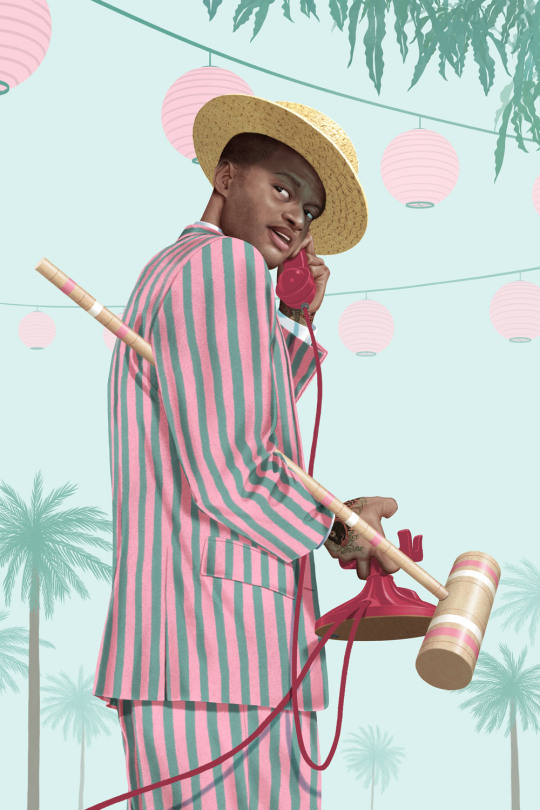
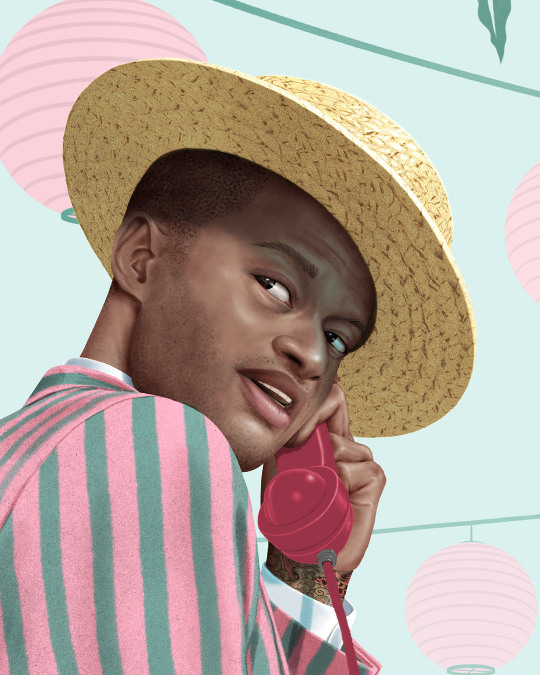

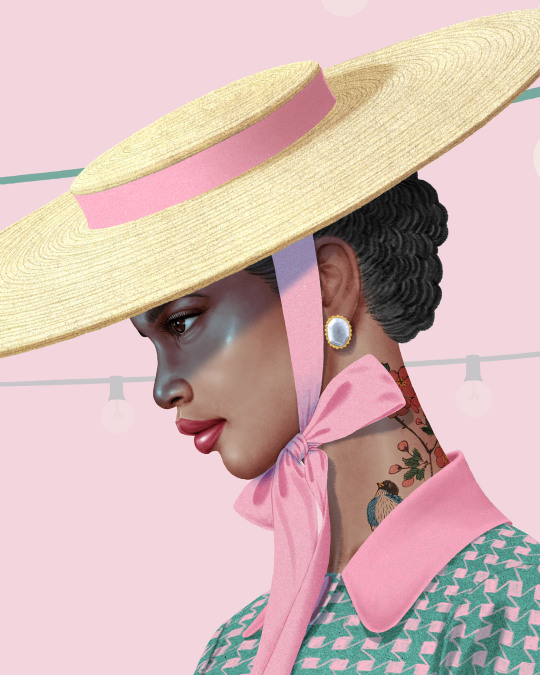



LINK TO BUY HERE
I tried to do something a little different this year and change the format of my Croquet and Ink series and add a little narrative possibility to it where the viewer can imagine their own story. Are they at separate croquet garden party fundraisers? One in Connecticut and one in Los Angeles and someone has slighted someone and now made someone's sh!t list and are now advising their partner/colleague/cousin via long distance phone call delivered by the white gloved butler directly to the croquet pitch to buy that business right out from under their new arch nemesis' husband's feet? The possibilities are endless. I also thought the prints would be fun displayed as a pair back to back with the phone lines less than subtly hinting at a connection.
A Dandy Wellington and Jason Raish collaboration. 100% of proceeds donated to The FIT Black Student Illustrators Award fund. These timed editions are available for 2 weeks only, never to be printed again (edition size will be the final number of prints sold). Sales begin April 28th @12:00pm EST until May 12th @12:00pm EST
LINK TO BUY HERE
$1,500 no-strings-attached awards will be given to Black student applicants displaying artistic merit and financial need graduating from New York’s Fashion Institute of Technology BFA illustration program. Recipients can do as they please with the award money as there’s no one way to reach your artistic goals. Recent data from The Illustrators Survey shows that 3% of the illustration industry is Black. Our goal is to help Black students bridge the gap between graduation and professional success so they can be seen, heard, and shape the narrative of this industry they are so underrepresented in.
If you want to make an individual donation please go to www.fitnyc.edu/give and be sure note the changed process: Choose other from the dropdown menu and manually type in FIT Black Student Illustrators Award to ensure you are donating to this fund. It is a 501(c)(3) organization. All the accounting and final $ amount of proceeds will be transparently and publicly shown and the final edition size announced.
I continued my Croquet and Ink series and created 2 illustrations exclusively for this fundraiser. This series takes the stuffy, conservative, homogenous nature of vintage high fashion and sets it alongside the rebellious self expression of tattoos (Japanese Ukiyo-e inspired). Add the historically upper crust game of croquet and you’ve got Croquet and Ink. As Dandy Wellington says: Vintage Style NOT Vintage Values.
In the summer of 2020 I found myself feeling paralyzed and useless during the renewed social justice movement and wanted to do something. Dandy Wellington and I have known each other for a few years and when he issued his #BlackApparelArts challenge I thought maybe the best thing I can do as an illustrator is fundraise with my art. I had just started teaching at FIT (my alma mater), we got together, ruminated, slapped our knees and said, this whole thing was born of illustration why don’t we get hyper-local and and support Black illustration students at FIT! We got to work and this is our 3rd year doing this. The fund was created under the FIT Foundation 501(c)(3) charitable giving arm.
We've partnered with FIT's own PrintFX print lab for the 12x18” Epson giclée 192 g/m matte archival prints to be signed and numbered. I've also partnered with Framebridge to provide framing. I personally use them a lot and make no money from this, I just want people to have a nice time and alleviate the hassle of getting things framed. 10% of Framebridge's cost will be donated to the fund and 100% of print proceeds will be donated.
For Prints: Save on shipping when you order two or more. For Frames: Free shipping provided by Framebridge when you buy a frame. I ship them the signed print, they frame it and ship it to you. Please allow 4-6 weeks for shipping as it's just me packing and shipping orders, on top of Framebridge's processing time.
Purchasers and donors are encouraged to leave a comment/note/encouragement at the checkout screen for the future recipients of this award and I will make sure they receive them. Hopefully this initiative is a start to diversifying the illustration industry and getting some great art for your walls at the same time!
And as always support the previous years winners:
Corinne Southerland @cori456_joyce, Adesewa Adekoya @blk.indigo, Shaniya Carrington @scrco.art, Jenis Littles @jenisdraws, Rico Ford @rico_antonio76, Dayna Moore @designmoore_studios
#illustration#fashion illustration#artists on tumblr#fyiart#croquet#representation matters#fit black student illustrators award#fashion institute of technology#dandy wellington#vintage fashion#vintage style#women's fashion#women's style#men's fashion#men's style#1920s fashion#lawn party#black illustrators
27 notes
·
View notes
Text
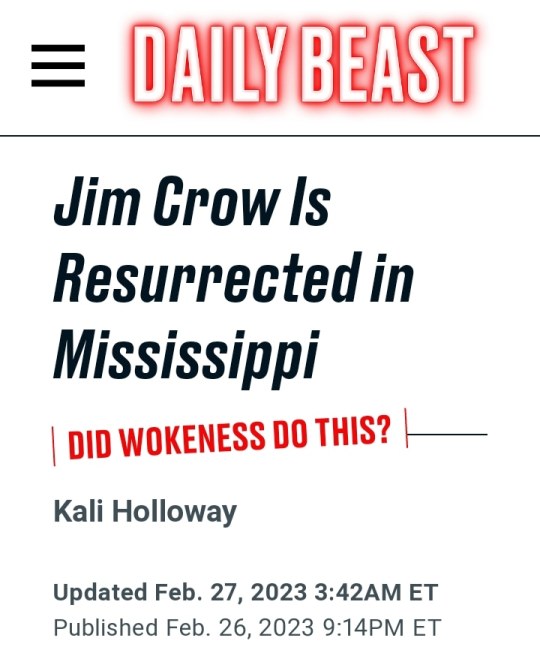
DAILY BEAST
CHEAT SHEET
NEWSLETTERS
LOG IN
CHEAT SHEET
POLITICS
Fever Dreams
Biden World
Elections
Opinion
National Security
Congress
Pay Dirt
The New Abnormal
Trumpland
MEDIA
Confider
Daytime Talk
Late-Night
Fox News
U.S. NEWS
Identities
Crime
Race
LGBT
Extremism
Coronavirus
WORLD
Russia
Europe
China
Middle East
INNOVATION
Science
TRAVEL
ENTERTAINMENT
TV
Movies
Music
Comedy
Sports
Sex
TDB's Obsessed
Awards Shows
The Last Laugh
CULTURE
Power Trip
Fashion
Books
Royalist
TECH
Disinformation
SCOUTED
Clothing
Technology
Beauty
Home
Pets
Kitchen
Fitness
I'm Looking For
BEST PICKS
Best VPNs
Best Gaming PCs
Best Air Fryers
COUPONS
Vistaprint Coupons
Ulta Coupons
Office Depot Coupons
Adidas Promo Codes
Walmart Promo Codes
H&M Coupons
Spanx Promo Codes
StubHub Promo Codes
Products
NEWSLETTERS
PODCASTS
CROSSWORDS
SUBSCRIPTION
GOT A TIP?
MY ACCOUNT
MANAGE NEWSLETTERS
SUBSCRIPTION OFFERS
NEED HELP?
LOG OUT
OPINION
Jim Crow Is Resurrected in Mississippi
DID WOKENESS DO THIS?
Kali Holloway
Updated Feb. 27, 2023 3:42AM ET Published Feb. 26, 2023 9:14PM ET
OPINION
Photo Illustration by Thomas Levinson/The Daily Beast/Reuters
Earlier this month, white representatives in the Mississippi House approved a bill to create a new district—that includes all of the majority-white neighborhoods in Jackson, a capital city that is 83 percent Black. This includes creating a criminal justice system for the district, overseen by an all-white power base.
Under House Bill 1020, the white conservative chief justice of the Mississippi Supreme Court would handpick the new district’s two supervising judges; its prosecutors and public defenders would be chosen by the state’s white Republican attorney general.
Advertisement
The zone would be policed by an expanded Capitol Police force, led by the current white police chief, and supervised by the state’s white Public Safety commissioner. Because all the district’s officials would be appointed instead of elected, Jackson’s majority-Black citizenry would have no voting rights on the matter—making it Mississippi’s only jurisdiction where, according to the ACLU, “unelected judges and prosecutors have jurisdiction over criminal and civil law matters”—although 12 percent of their sales taxes would be redirected to help pay for it all.
“It’s oppressive because it strips the right of Black folks to vote,” Jackson Mayor Chokwe Antar Lumumba said, after the bill cleared the House. “It’s oppressive because it puts a military force over people that has no accountability to them. It’s oppressive because there will be judges who will determine sentences over people’s lives. It’s oppressive because it redirects their tax dollars to something they don’t endorse nor believe in.”
State Rep. Trey Lamar, the white Republican who sponsored the bill, lives in and represents a majority-white district more than two hours away from Jackson. (He holds a seat once held by his grandfather, Leon Hannaford, whose legacy includes introducing a 1962 bill to tighten residency requirements for college students, which a local paper at the time reported, “would have kept Negro James Meredith from filing suit to enter the University of Mississippi.”) In various statements on the House floor and in an op-ed from last weekend, the legislator has insisted that HB 1020, by adding unelected judges to Hinds County’s courts, will help clear up lengthy case backlogs, while an expanded Capitol Police force will address a spike in crime in Jackson, allowing his constituents to “feel safe when they come” to the capital.
Advertisement
“Black House Democrats rightly compared the bill to Mississippi’s 1890 Constitution, which was drafted explicitly to ‘exclude the Negro’ from voting through sinster methods of black disenfranchisement.”
Calling the bill “racially neutral,” he suggested Jackson’s Black elected representatives, who overwhelmingly rejected the legislation, have “used race” as some kind of political maneuver, and has even gone so far as to accuse those same black officials of “incompetence in leadership.”
Advertisement
If it’s not already obvious already, there’s really only one way to describe an effort to create a white political stronghold in America’s second blackest city, where the Black majority is subject to taxation without representation—and that is, “trying to pull a Jim Crow.”
But it’s not just the top-down white supremacist power structure the bill proposes that begs the Jim Crow comparisons. It’s also the overtly racist subtext needed to justify the idea that white power is the natural “solution”—an assumption so frequently made, it’s recognizable between all those lines of “racially neutral” language. (At the suggestion of an amendment to ensure his bill’s unelected judges at least be from Jackson, Lamar suggested the search not be limited to the majority-Black city, asking, “Do we not want our best and brightest sitting in judgment?”)
Advertisement
Black House Democrats rightly compared the bill to Mississippi’s 1890 Constitution, which was drafted explicitly to “exclude the Negro” from voting through sinster methods of Black disenfranchisement. But the toppling of Reconstruction, in Mississippi as elsewhere, was also driven by the white supremacist assumption of Black incompetence, intellectual unfitness, and innate inadequacy, ideas fabricated to cast Black folks as incapable of leading. One Mississippi delegate would later write that the goal of the state’s constitutional convention had been “to adopt some provision in our organic law which would serve to the State a good and stable government, freed from…negro rule from which we had suffered” and to “remove from the sphere of politics in the state the ignorant and unpatriotic negro.”
For nearly a century, the white racist recollection of Reconstruction would redact and overwrite history, smearing Black leaders as inherently unfit to hold office, and falsely portraying the reestablishment of absolute white authority as a necessary intervention and saving grace.
Perhaps this history is lost to Mississippi’s current white legislators, but that seems unlikely considering the effort they’ve put into scrubbing it from textbooks. (Ditto the fact that “no Black official has held” any of the designated shot-calling positions—attorney general, chief justice of the Supreme Court—nor “any statewide elected office since the brief period of Reconstruction after the Civil War, which ended due to white terrorism to block Black voting power,” the Mississippi Free Press reported.)
Apartment complexes and neighborhoods in the southern part of the capital city in Jackson, Mississippi.
Rory Doyle/Reuters
Advertisement
Mississippi Today reports that during the four-hour debate over the bill, as “Black House members were doing all they could to plead with the humanity of their GOP colleagues, a large number of Republicans left the House floor altogether for a majority of the debate, reappearing from the back halls of the Capitol to cast a final ‘yea’ vote.” Lamar, apparently indifferent, “sat behind the well and scrolled his phone.”
And yet, Lamar keeps saying that HB 1020 is a “good faith effort at helping the people” of Jackson and Hinds County, but it sure seems like the same tired narrative of the “civilizing” power of whiteness being used to save “uncivilized” Blackness from itself.
What’s more, this sudden compulsion to help by takeover—framed almost as charitable giving, in debate over the bill—comes after years of apparently feeling unmoved. Both Lamar and Gov. Tate Reeves used the language of “incompetence” when indicting Jackson’s Black leaders about the recent water crisis, but Jackson’s leaders had already pleaded for funds from Mississippi’s legislative supermajority, only to be repeatedly shortchanged. Jackson city schools have long been underfunded, an issue that was exacerbated by 2013’s Charter Public Schools Act, but instead of correcting the problem, a takeover was again proposed as a logical solution. And during this legislative session, instead of organizing a hostile takeover, the legislature could vote to expand Medicaid, which would do far more to aid Black Jacksonians than stripping their voting rights could even pretend to. But so far, Mississippi’s legislative majority seems uninterested in providing that sort of help.
Advertisement
Makes you wonder where the ineptitude truly lies.
“If it’s not already obvious already, there’s really only one way to describe an effort to create a white political stronghold in America’s second blackest city, where the black majority is subject to taxation without representation—and that is, ‘trying to pull a Jim Crow.’ ”
If HB 1020 isn’t an attempt at a “land grab,” as Democratic Rep. Ed Blackmon called it, then why does the bill not simply seek to fund more permanent elected judges to Hinds County and Jackson’s courts, instead of diverting tax money to a whole new district? If criminal cases have surged in tandem with Jackson’s crime surge, thus creating the backlog that Lamar wants to address, then why are the unelected judges of HB 1020 also going to be handling civil cases, to re-pose another question from Blackmon? (Especially since, in his op-ed self-defense, Lamar notes that Hinds County District Attorney Jody Owen stated that “our current judges are working really hard, but they have half civil and half criminal dockets.”)
Mississippi’s crime lab has been underfunded, understaffed, and under-equipped for years—contributing to backlogs in Jackson’s courts and all around the state—and yet Lamar’s bill does nothing to address long-standing appeals from lab staffers to address any of those issues. Overlooking these problems doesn’t seem like a good way to address Jackson’s criminal court case backlogs, unless what you were really trying to do was to create yet another entrenched white power system in the state.
Advertisement
Mississippi’s Capitol Police officers reportedly shot more people in 2022 than any other Mississippi law enforcement department, with the most recent shooting occurring in December. The department’s fatal police shooting of 25-year-old Jaylen Lewis in September is still under investigation by the Mississippi Bureau of Investigation. At a meeting between the police chief and public safety officers, Black residents expressed concerns that Capitol officers don’t know “how to deal with Black people in Black neighborhoods,” and fears that most of the force’s officers are from counties “known for their racial prejudice.”
While the new Capitol District will still be majority Black, it will also include 80 percent of Jackson’s white residents, and guess whose property rights will be prioritized over all else, including certain folks’ lives? Nevermind Capitol Police lack an “oversight board or standard requirements around transparency of reporting regarding officer-involved shootings,” as Jackson-based organizer Makani Themba wrote for The Nation.
Just as Lamar wants his constituents to “feel safe when they come” to the capital, Black Jacksonians want to feel safe, too, both from crime and from over-policing. It’s a concern the legislator blithely dismissed by stating, “if you're not committing crimes in Jackson, you really don't have anything to worry about.”
Advertisement
That’s quite a statement from someone with deep roots in a state notorious for creating the first Black Codes, having the most racial terror lynchings, having a Senate that voted to ship its Black residents to Africa at the late date of 1922, which created the first White Citizens' Council, which removed the Confederate flag from its banner in 2020, and which attempted to ban the teaching about all of those things with a bill that erroneously calls it “critical race theory.”
In 2023, the Mississippi House passed a bill that would essentially resurrect Jim Crow; now that proposed law will head to the Senate, where Republicans also retain majority power. Perhaps Mississippi will become the first state to so openly reinstate Jim Crow, extracting Black power in every form it can, yet again. And others will undoubtedly follow.
DAILY BEAST
ABOUT
CONTACT
TIPS
JOBS
ADVERTISE
HELP
PRIVACY
CODE OF ETHICS & STANDARDS
DIVERSITY
TERMS & CONDITIONS
COPYRIGHT & TRADEMARK
SITEMAP
BEST PICKS
COUPONS
Dick's Sporting Goods Coupons
HP Coupon Codes
Chewy Promo Codes
Nordstrom Rack Coupons
NordVPN Coupons
JCPenny Coupons
Nordstrom Coupons
Samsung Promo Coupons
Home Depot Coupons
Hotwire Promo Codes
eBay Coupons
Ashley Furniture Promo Codes
© 2023 The Daily Beast Company LLC
1 note
·
View note
Photo

As mentioned in our previous article, our Transportation Assistant Ensign Wilson was played by Garland Lee Thompson, Sr. He was born in 1938 in Muskogee, Oklahoma but his family moved to Portland, Oregon when he was seven. It was during high school there that he discovered his love of theater and dance. At age 20, he moved to Los Angeles. His first movie part was that of a ceremonial dancer in the Roger and Hammerstein movie, South Pacific.
His dual talents in theater and dance paid off when he landed the part of Wilson in “The Enemy Within.” According to his son, Garland Thompson, Jr., there was no stuntman coordinator to block out the moves Thompson and Shatner would have to make during the fight scene between the two of them. Luckily, William Shatner had also studied dancing and the two of them went into a corner and choreographed the movements. By the time they were finished, the filming crew was ready to roll. Shatner and Thompson hit their marks perfectly, the scene was all done in one take, and the focus puller declared the film gate was clean. Which thrilled the crew because that meant everyone could eat an early lunch.
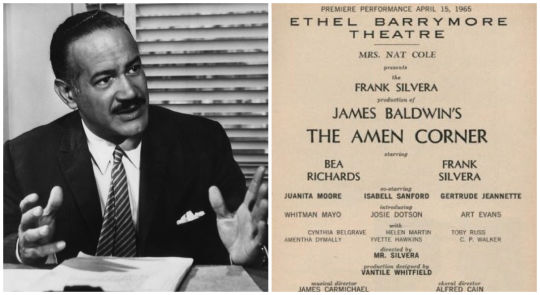
Garland Thompson performed on other television shows of the 60s such as The Lieutenant, Perry Mason and Bewitched. But he always preferred working on the stage. Even while he was on stage or before the camera, he still attended acting classes at various conservatories and workshops. The most influential of these was Frank Silvera’s Theatre of Being Workshop. Frank Silvera was an accomplished black actor in film and on the stage (his performance as King Lear in the Shakespeare play of the same name, directed by Joseph Papp, is still considered one of the best). Silvera started his workshop as a way of improving racial equality in the arts by providing instruction and support for young black actors. He also helped them attain membership in the actors’ unions and he created a theater where they could perform. Garland Thompson gave full credit to Silvera for helping him attain success as an actor, a playwright, and a theater producer. His mentor’s sudden death in 1970 at the age of 56 affected him deeply. (photo on left is Frank Silvera and on the right is a playbill from one of his productions. Note the names Isabell Sanford and Whitman Mayo)
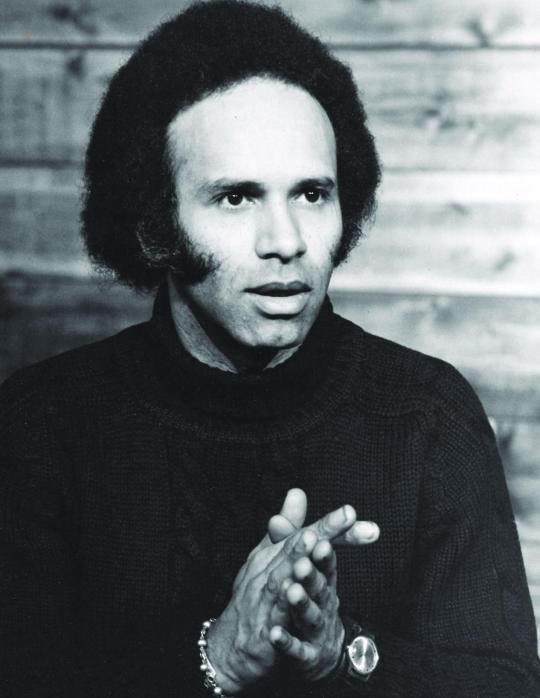
Garland was already learning his way around and behind the stage as well as in front of it. He had served as the stage manager for Ray Bradbury’s plays in L.A. but then moved to New York to be the original stage manager and associate director for No Place to be Somebody by Charles Gordone on its first national tour as well as twice more during its run on Broadway. He also began to dabble in writing plays. This led him to realize how hard it was for black playwrights to have their plays produced. As a result, Garland Thompson decided to join actor/director Morgan Freeman, actress/director Billie Allen Henderson, and journalist/ theater critic to form the Frank Silvera’s Writers’ Workshop as a testament to his mentor and as a place for people of color to develop their play writing skills. He also served as its Executive Director. Within weeks, Garland was leading Monday night readings (and later Saturday night readings) along with critical discussions at the Martinique Theater in New York, one of many theaters that housed the Frank Silvera’s Writers workshop over the years. These readings were almost always packed. But they allowed budding playwrights a chance to hear their material read aloud for the first time and critiqued. Some rewrote their plays after the first presentation and brought them back to be read and critiqued a second time.


Over the years, around 20,000 scripts were written and read at the workshop. Thompson also helped writers get their scripts produced on stage, including Ntozake Shange’ and her award winning play For Colored Girls Who Have Consider Suicide, When the Rainbow is Enuf. Many of the students in the workshop also learned how to work backstage in largely unseen but very important duties, such as those involving lighting and sound. This gave them a more complete education in the theater arts. Garland Thompson even brought his own work in front of his students to be read and critiqued, then later produced. A playbill and a newspaper advertisement illustrate production details of two of his plays. Many major figures in Black Theater participated in several aspects of the workshop. These included Ruby Dee, Angela Bassett, Adolph Caesar. Morgan Freeman, Debbie Allen, Aduke Aremu, Samuel L. Jackson, LaTonya Richardson-Jackson, Phylicia Rashad, and Charles Dutton.
youtube
In early 1999, Inside New York (a local TV news magazine) interviewed Mr. Thompson about the reasons he and his cofounders believed a workshop for people of color to write and produce plays was necessary. Do yourself a favor and carve yourself out some time to watch it in its entirety. This man’s charisma was amazing as was his enthusiasm for helping young people of color enter the world of theater.
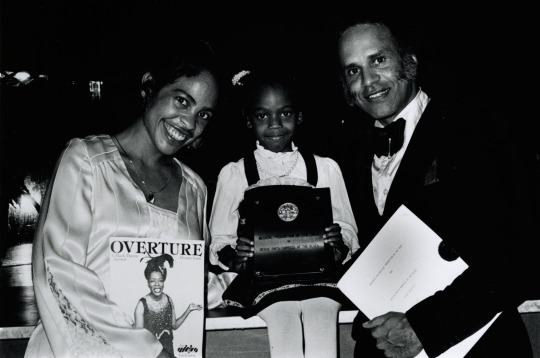
During his lifetime, Mr. Thompson worked with and often headed many other organizations devoted to Black Theater and received many honors in connection with them. He was the founding board member of the Harlem Arts Alliance and also served on the Board of Directors. In addition to being one of the founding members of the FSWW, he served as its director and was President of the Board of Directors of the FSWW Foundation, Inc. in 1981. The AUDELCO awards were created to promote "recognition, understanding, and awareness of the arts in the African-American community." Garland Thompson was given the Board of Directors Award in 1976 for superior and sustained contribution to community theater. He also earned another AUDELCO award in 1981 as the producer of Bessie Smith, Empress of the Blues. The photo above shows him along with two other recipients at the 1981 Awards. He also was the winner of the Washington D.C. One-Act Play Festival (according to the book Voices of Color) and the FSWW under his direction was awarded the Obie for playwrighting in 1989.

Garland also became involved in the National Black Theater Festival, starting with its second year. He set up and directed The Readers Theatre program, which grew and expanded over the years. He is shown above with his friend Ossie Davis, who was another major figure in Black Theater and who started the Festival’s first poetry slam in 2001.
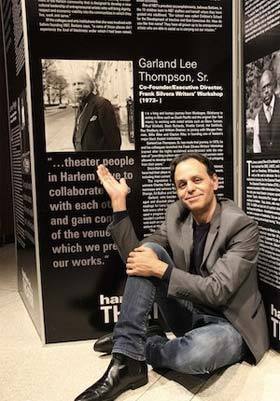
(photo credit - Lia Chang)
Unfortunately, Garland Thompson suffered a serious fall in early November 2014 which resulted in being transported to the intensive care unit at Harlem Hospital. Unfortunately, he never regained consciousness and developed pneumonia and other serious conditions. He died on the 18th at age 76. Garland Thompson’s death was mourned by the Black Theater world. The first memorial devoted to his life and contributions was the addition of his life story to the “harlem is... Theater” Exhibition at New York’s Interchurch Center in December of 2015. Garland Lee Thompson Jr. is seen in the photo above in front of the the tribute to his father.

On February 12th of 2015, Representative Charles Rangel of New York gave a speech in front of the U.S. House of Representatives to celebrate the legacy of Garland Thompson. This speech became an official part of the Congressional Record. If you wish to read it, then click here: https://www.govinfo.gov/content/pkg/CREC-2015-02-12/html/CREC-2015-02-12-pt1-PgE208-3.htm
Instead of a traditional funeral, there was a Three Act Performance Tribute, two of which were held on February 14th, which would have been Garland’s 77th birthday. The First Act was a Memorial held at St. James Presbyterian Church. In the photo above, Garland’s son (Garland Lee Thompson, Jr.) is holding a copy of the Congressional Record containing his father’s tribute along with a photo of his father. Act Two was a reception later that day at the Johnson Theater for the New City. Garland Lee Thompson, Jr. and Sean C. Turner hosted an afternoon of readings, poetry, and performances which ended with a celebration of Garland Sr.’s birthday. The final act was held in August of that year during Harlem’s National Black Theatre Festival. This is where Garland created the Readers Theater so Act III was a fitting final tribute to a man who had spent over 40 years teaching, encouraging, and nurturing writers and artists of color. His son Garland Thompson, Jr., is a noted playwright, actor, cinematographer, poet, director and producer, although he has worn many, many other hats in the arts over the years. Since 2008, he has been the Coordinator for the Poetry Out Loud recitation contest for high school students in Monterey County, California (this is part of a national contest funded by the National Endowment of the Arts) and hosts the Rubber Chicken Open Mic and Poetry Slam at the East Village Coffee Lounge in Monterey (which he co-founded 14 years ago). In 2014 he took over running his father’s Frank Silvera’s Writers’ Workshop in New York.
#Star Trek TOS#Redshirt#Garland Lee Thompson#Frank#Silvera's Writer Workshop#National Black Theater Festival#The Readers Theatre#Ensign Wilson
8 notes
·
View notes
Photo
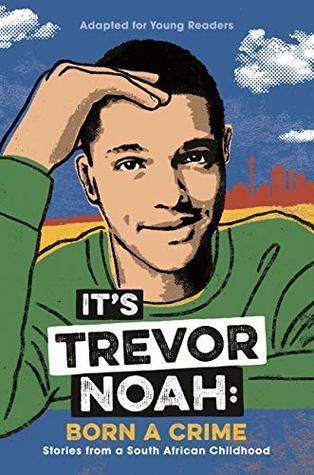

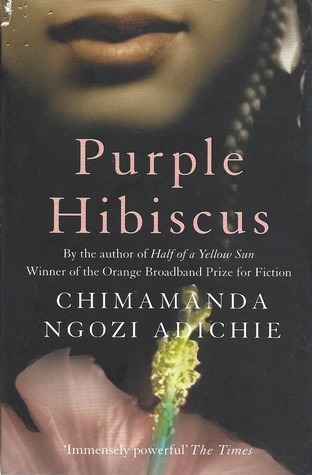


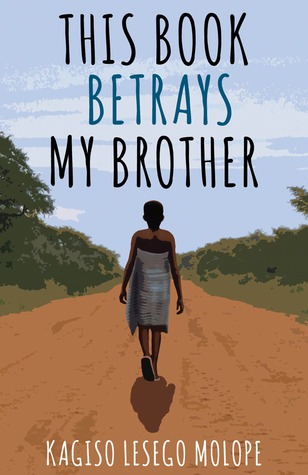


#ReadingAfrica
Catalyst Press held a #ReadingAfrica Week during the first week of December. The campaign just ended, but we encourage everyone to #ReadAfrica all year long. Here are some of the Young Adult books we’ve enjoyed and recommend:
It's Trevor Noah: Born a Crime: Stories from a South African Childhood (Adapted for Young Readers) by Trevor Noah - Delacorte
The host of The Daily Show, Trevor Noah, tells the story of growing up half black, half white in South Africa under and after apartheid in this young readers' adaptation of his bestselling adult memoir Born a Crime: Stories from a South African Childhood.
Trevor Noah shares his story of growing up in South Africa, with a black South African mother and a white European father at a time when it was against the law for a mixed-race child like him to exist. But he did exist--and from the beginning, the often-misbehaved Trevor used his smarts and humor to navigate a harsh life under a racist government.
How Dare the Sun Rise: Memoirs of a War Child by Sandra Uwiringiyimana, Abigail Pesta - Katherine Tegen Books
This profoundly moving memoir is the remarkable and inspiring true story of Sandra Uwiringyimana, a girl from the Democratic Republic of the Congo who tells the tale of how she survived a massacre, immigrated to America, and overcame her trauma through art and activism. Sandra was just ten years old when she found herself with a gun pointed at her head. She had watched as rebels gunned down her mother and six-year-old sister in a refugee camp. Remarkably, the rebel didn’t pull the trigger, and Sandra escaped. Thus began a new life for her and her surviving family members. With no home and no money, they struggled to stay alive. Eventually, through a United Nations refugee program, they moved to America, only to face yet another ethnic disconnect. Sandra may have crossed an ocean, but there was now a much wider divide she had to overcome. And it started with middle school in New York. In this memoir, Sandra tells the story of her survival, of finding her place in a new country, of her hope for the future, and how she found a way to give voice to her people.
Purple Hibiscus by Chimamanda Ngozi Adichie - Harper Perennial
Fifteen-year-old Kambili and her older brother Jaja lead a privileged life in Enugu, Nigeria. They live in a beautiful house, with a caring family, and attend an exclusive missionary school. They're completely shielded from the troubles of the world. Yet, as Kambili reveals in her tender-voiced account, things are less perfect than they appear. Although her Papa is generous and well respected, he is fanatically religious and tyrannical at home—a home that is silent and suffocating. As the country begins to fall apart under a military coup, Kambili and Jaja are sent to their aunt, a university professor outside the city, where they discover a life beyond the confines of their father’s authority. Books cram the shelves, curry and nutmeg permeate the air, and their cousins’ laughter rings throughout the house. When they return home, tensions within the family escalate, and Kambili must find the strength to keep her loved ones together. Purple Hibiscus is an exquisite novel about the emotional turmoil of adolescence, the powerful bonds of family, and the bright promise of freedom.
Aya: Life in Yop City by Marguerite Abouet, Clément Oubrerie (Illustrator) - Drawn and Quarterly
Ivory Coast, 1978. It’s a golden time, and the nation, too—an oasis of affluence and stability in West Africa—seems fueled by something wondrous. Aya is loosely based upon Marguerite Abouet’s youth in Yop City. It is the story of the studious and clear-sighted nineteen-year-old Aya, her easygoing friends Adjoua and Bintou, and their meddling relatives and neighbors. It’s a wryly funny, breezy account of the simple pleasures and private troubles of everyday life in Yop City. Clément Oubrerie’s warm colors and energetic, playful line connect expressively with Marguerite Abouet’s vibrant writing. This reworked edition offers readers the chance to immerse themselves in Abouet’s Yop City, bringing together the first three volumes of the series in Book One.
Hope is Our Only Wing by Rutendo Tavengerwei - Soho Teen [Rich in Color Review]
For fifteen-year-old Shamiso, struggling with grief and bewilderment following her father's death, hope is nothing but a leap into darkness. For Tanyaradzwa, whose life has been turned upside down by a cancer diagnosis, hope is the only reason to keep fighting. As the two of them form an unlikely friendship, Shamiso begins to confront her terrible fear of loss. In getting close to another person, particularly someone who's ill, isn't she just opening herself up to more pain? And underpinning it all - what did happen to her father, the night of that strange and implausible car crash? Rutendo Tavengerwei's extraordinary debut takes an honest look at hope, and the grit and courage it can take to hang on to it.
This Book Betrays My Brother by Kagiso Lesego Molope - Mawenzi House Publishers [Rich in Color Review]
What does a teenage girl do when she sees her beloved older brother commit a horrific crime? Should she report to her parents, or should she keep quiet? Should she confront him? All her life, Naledi has been in awe of Basi, her charming and outgoing older brother. They've shared their childhood, with its jokes and secrets, the alliances and stories about the community. Having reached thirteen, she is preparing to go to the school dance. Then she sees Naledi commit an act that violates everything she believes about him. How will she live her life now? This coming-of-age novel brings together many social issues, peculiar not only to South Africa but elsewhere as well, in the modern world: class and race, young love and physical desire, homosexuality. In beautiful, lyrical, and intimate prose, Molope shows the dilemmas facing a young woman as she attempts to find her place in a new, multiracial, and dynamic nation emerging into the world after more than a century of racist colonialism. A world now dominated by men. There are no simple answers.
Akata Witch by Nnedi Okorafor - Speak [Rich in Color Review]
Sunny Nwazue lives in Nigeria, but she was born in New York City. Her features are West African, but she's albino. She's a terrific athlete, but can't go out into the sun to play soccer. There seems to be no place where she fits in. And then she discovers something amazing—she is a "free agent" with latent magical power. And she has a lot of catching up to do. Soon she's part of a quartet of magic students, studying the visible and invisible, learning to change reality. But just as she's finding her footing, Sunny and her friends are asked by the magical authorities to help track down a career criminal who knows magic, too. Will their training be enough to help them against a threat whose powers greatly outnumber theirs?
Akata Warrior by Nnedi Okorafor - Viking Books for Young Readers
A year ago, Sunny Nwazue, an American-born girl Nigerian girl, was inducted into the secret Leopard Society. As she began to develop her magical powers, Sunny learned that she had been chosen to lead a dangerous mission to avert an apocalypse, brought about by the terrifying masquerade, Ekwensu. Now, stronger, feistier, and a bit older, Sunny is studying with her mentor Sugar Cream and struggling to unlock the secrets in her strange Nsibidi book. Eventually, Sunny knows she must confront her destiny. With the support of her Leopard Society friends, Orlu, Chichi, and Sasha, and of her spirit face, Anyanwu, she will travel through worlds both visible and invisible to the mysteries town of Osisi, where she will fight a climactic battle to save humanity. Much-honored Nnedi Okorafor, winner of the Hugo, Nebula, and World Fantasy awards, merges today’s Nigeria with a unique world she creates. Akata Warrior blends mythology, fantasy, history and magic into a compelling tale that will keep readers spellbound.
47 notes
·
View notes
Photo

2016 Student Design Award Winner, Ailsa Johnson
I was attracted to this cover initially as I love the illustration style. It’s quirky, original and the use of handwriting fits in really nicely with the line quality. The refined colour palette works successfully in providing a nice aesthetic but also in highlighting certain aspects and provides platforms for type. For example, the gold envelope allows the title to be positioned on it in black writing. I think having the illustration span over the front and back cover works really nicely and creates a smooth transition. The design is really clever in having the coat transform into a building on the back cover.
I often use my handwriting in my own work and am considering the use of it for my cover if its appropriate with the content. This cover works successfully with having hand written type for the title and pull out quotes on the back, with digital type for the main bulk of the body copy as this ensures it will be readable.
2 notes
·
View notes
Text
#Goals
SET THEM. BE THEM. REACH THEM.

"If you can dream it, you can do it" - Walt Disney
I grew up in a family where status in life really matters. Our state of living has caused our parents to raise us putting in our minds that the best person that will help us in our future is none other than but ourselves and for us to help ourselves is to set and achieve our goals. My goals in life, either short or long term goals, are products and inspired by the hardships that my family and I have encountered.
At a very young age, I already learned to become a dreamer and a goal achiever. I can still remember how I portrayed and acted as a woman I dream to be in the future. Just like other creative and very active kids, I love sketching and listing my dreams and goals in a sheet of paper, with cut illustrations from magazines, then will paste it in the wall of our bedroom. It became a motivation for me to strive more in every day of my life. In that way, it became my habit to set and accomplished the things I wanted to do which I brought up until now. Now that I am an adult, setting my dreams and my goals became more serious and practical. I may have many goals in life that I want to achieve, I make sure in myself that I somehow making and doing ways to achieve it little by little.
Here are some of my listed goals together with the steps of how I will achieve this.
SHORT TERM GOALS
My short-term goals are focused on becoming the best version of myself.

To be Fit and to Commpete in a Swimming Competition
It was always a goal for me to be fit, physically, mentally, and emotionally, because it enables me to work and achieve things I wanted to anytime without getting myself abused. Being fit was a very helpful thing to me especially as a college student, it helps me to be productive and finish tasks I am assigned to do in a particular time. It also helps me to resolve my issue in myself being appearance-conscious. And the fact that I am now part of the University Swimming Athletes, it was hitting two birds in a one stone situation, I am targeting to be fit for me to accomplish my beginner athlete goal which is to be able to compete in a swimming competition before this year ends, bagging awards will be an extra achievement for me.

More Travel, More Fun in the Philippines!
More traveling, mountain climbing or hiking, Island hopping or just sunbathing on the beach, is what I am looking forward to this year's summer or breaks activities. Just like the old times, it was a tradition of mine to do or go somewhere to have a peaceful break from acad life. Most of the time, it was just a sudden outing of our family, but sometimes I am the one who's planning to go somewhere with or without my family or friends. I love traveling, especially if my destination is more of nature's view. It gives relief, brings peacefulness in my mind, and my kind of energy booster.

To Wear the Best Attire of All Time!
As soon as possible, I want to finish college and wear the best attire that I can dress up which is the black toga. Wearing this dress is being entitled and this is a title that nobody can steal nor destroyed, the education, the knowledge. I am looking forward to this time to come. And for me to be able to achieve this is to stay focused on my study, and avoid the things that may cause me a delay on a process.

Save Money and Open a Savings Account
It's my habit to save money. Once I already got my weekly allowance, I will divide it for my budget on transportation and food and for my savings. Yes, I do give part for my savings on the division of my allowance because it enables me to save more and be strict on spending. Within this year, I'm looking forward to opening a savings account because I want to discover and explore what's or how's engaging in society's money circulation. For this, I know that saving as a habit will help me not just in the future, but also it was a big help in achieving things or goals that I wanted to accomplish.
LONG TERM GOALS
My long term goals are focused on who I want to become in the future.

Successful Careers
Given that I am pursuing a major in Physical Education, I am looking forward to becoming a Physical Education Professor and a Gym Instructor. Since I discovered that my interest in life was more of physical activities and improving lifestyle, I am pursuing a career that will target both my interest and a successful career. Achieving this will be easy if I will stay focused, determined, and passionate for my decisions and what I am doing through the process.

To Build a Business
Others used to describe me as a business-minded because I always use to look for an opportunity to everything my eyes can see and my mind can imagine. In fact, I started selling my hand-made colored pearl or beads necklaces and bracelets way back when I was in grade 4 age of 9 and my customer that time was my classmates but doesn't work for a long time. Then way back in 2016, I started my hand-made paper-crafts business. When I got extra time after class, I am doing paper-crafts/stuff such as scrapbook, surprise box, photo albums, etc. then will sell it for who are looking for a romantic or celebration gift. It became popular that I even have customers international. With my interest in doing business, I imagine myself having my own real and successful businesses in the future. By achieving that, I will be eager to learn more all about the business thing, about the business strategies and marketing, and how to make it successful.

Tour Around the World
I was a fan of different places, and I am an adventurer. After or while earning money I want to enjoy my life by traveling around the world. It was my childhood dreams and I want to pursue it, now that I know in myself that I can and I will do it in the future. It was never just a dream that will be forgotten as a drawing, through believing in yourself that you can and being productive in your early life will make your drawing colorful and realistic.

Home
This was a house I am imagining that I will build in the future, an elegant house with a pool and a balcony. But what matters in my future house this is the home that I will build. Settling down with my future loved ones and future kids with a comfortable and nicer life in this house are the ultimate goal that I can imagine in my life. Of course, while settling down, I will give back to my parents with all my heart through continues supporting and taking care of them especially they are growing old and needed extra care. And for me to achieve this is through believing in myself, my acceptance in myself, and pursuing what is good for everyone and pushing myself into the best I can.
Believe in yourself you can and you are, be positive, and everything will follow. Nothing is impossible in a woman whose dreams are bigger and actions are greatest.
10 notes
·
View notes
Text
Reading Log #1
Book One They All Saw a Cat by Brendan Wenzel 2017 Caldecott Honor Book Publisher: Chronicle Books (2016) Hardcover: 38 Language: English ISBN: 9781452150130
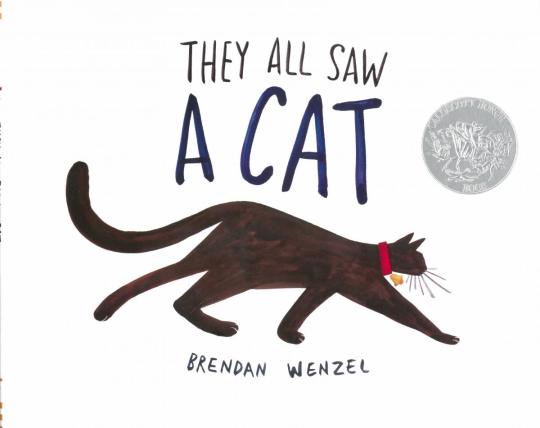
Narrative Plot: Brendan Wenzel uses repetition, prediction, and pace wonderfully as the story follows a cat as it "walked through the world, with its whiskers, ears, and paws." Along the way the cat passes a variety of beings: humans, animals, and bugs; each seeing that cat with their own unique perception. Relationship Between Text and Visual Pictures: The visual images and the text complement each other perfectly. Each page spread considers the perspective of the particular being as it perceives the cat. The images Brendan Wenzel used are made from a variety of mediums: colored pencils, oil pastels, acyrlic paint, watercolor, charcoal, Magic Marker, pencil, and a MacBook. The use of multiple mediums allows for many different images of the cat to come alive. Use and Appeal: There is a huge appeal to audiences of all ages. The words are simple but the images are rich leaving much open for critical thinking and conversation. In fact, the book ends in a question which begs the reader or reader and group of listeners to consider: "imagine what it saw?"
Book Two The Watermelon Seed by Greg Pizzoli 2014 Theodore Seuss Geisel Award Book Publisher: Disney Hyperion Books (2013) Hardcover: 34 Language: English ISBN: 9781423171010
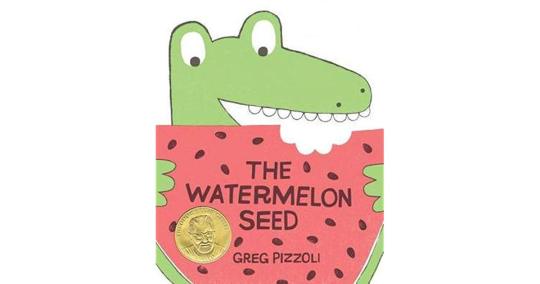
Narrative Plot: This book tells a story of a crocodile who loves watermelons. While the crocodile talks about how much he/she loves watermelon, he/she eats a piece and accidentally ends up swallowing a seed. What ensues is a humorous freak-out that has the crocodile spiraling into a fear that he/she will turn into a watermelon! Luckily, the tragedy is averted when he burps up the seed and swears off watermelon...after just one more bite, he promises. Relationship Between Text and Visual Pictures: The text and the images complement each other throughout the story. Pizzoli kept his palette simple by using only four colors: watermelon pink, green, black, and white. The lines used are simple, thin and clean. In addition, since the crocodile is meant to make the young reader laugh, he is illustrated as short, round, and without scales and scary pointy teeth. Use and Appeal: There is definitely a high appeal for this book. I think it would be best suited to a children's story time or end of the day book to quiet kids. The story is engaging because of its humor and use of text and picture to showcase the humor.
Book Three Alma: and How She Got Her Name by Juana Martinez-Neal 2019 Caldecott Honor Book Book Publisher: Candlewick Press (2019) Hardcover: 34 Language: English ISBN: 978-0-7636-9355-8 (English hardcover)

Narrative Plot: This book tells the story of a young girl named Alma Sofia Esperanza José Pua Candela and how she got her name. When she complains to her father that her name is “too long to fit,” he sits her down to tell her where she got each of her names. As her father describes all the important people whose name she carries, Alma illustrates how they suit her. When he gets to her very first name, Alma, he tells her that she is the very first Alma and that she will write her own story. In the end, Alma embraces her name and is empowered to tell her story. Relationship Between Text and Visual Pictures: The illustrations were created using graphite, colored pencils and print transfers on handmade textured paper. Martinez-Neal also uses another simple palette by illustrating this story using only three colors (red, blue, and black) on a white background. The images and text follow a repetitive pattern: image and text of Alma and father together on one half of spread and image and text of person who Alma is named after. The subsequent spread has the image and text spread across the two pages and revolves around Alma fitting the name to herself. Use and Appeal: This story is very appealing to younger audiences, ages 3-6. I can see it being used in a diverse classroom with students of all backgrounds coming together with different people for perhaps the first time. It opens the door to allow students to take pride and ownership of their name and the story they choose to tell by using the culture and tradition of the latinX naming process.
Book Four Am I Beautiful? Written by: Infinitefriendship Artist: flapperdoodle Publisher: Storybird (January 29, 2019) ebook: 23 pages Language: English URL: https://www.storybird.com/picture-book/2rejkea7m7-
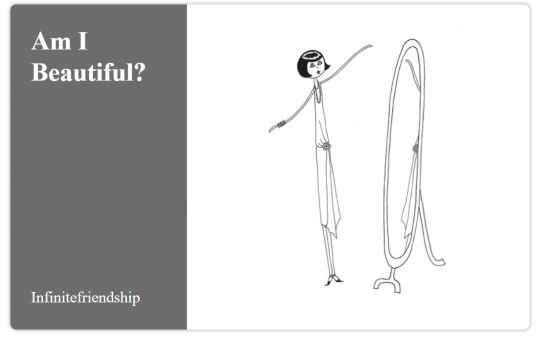
Narrative Plot: This ebook tells the story of a nameless girl who is doing some internal reflection on herself and how the world sees her. It goes through how she sees and defines herself then poses questions to the outside world of whether she qualifies as beautiful then concludes with her stating she is. Relationship Between Text and Visual Pictures: The illustrations complement the text. This is because the illustrations are all of the same character in various situations and clothing. The story is about only her as she reflects on who she is/what the world sees in her so it is appropriate that she is the main and really only focal point of most of the illustrations. Furthermore, the facial expression of the main character remains entirely the same except when she questions if she is beautiful. In that moment, she looks apprehensive. At all other times, her eyes are closed and she seems to be okay with herself, almost at peace. This decision in illustration truly puts an emphasis on that very real anxiety tweens (and many others) feel when considering themselves in the view of the world. Use and Appeal: This story would be appealing to an audience of tweens as it covers the topic of self-love and self-esteem. I think what may be appealing even more, though, is that this was created by a regular person. I think this gives a great point of conversation for tween students. It sets an example of using their voice to talk about their feelings. It also allows for an activity where they think about what they like about themselves.
Book Five My Family is Not Different Written by: missK Artist: SebastiaanVanDoninck Publisher: Storybird (January 29, 2019) ebook: 12 pages Language: English URL: https://www.storybird.com/picture-book/my-family-is-not-different-

Narrative Plot: This ebook describes a young child’s family with emphasis on the fact that their family isn’t different, “it’s mostly like yours. It’s filled up with love that pours through the house and outside the doors.” Relationship Between Text and Visual Pictures: The illustrations complement the text really well. The family is obviously quirky and so the images are as well. Bold colors and patterns are on the beings that are on the pages. They especially stick out on the white paper contrasting the speaker’s emphasis on their family’s non-differences. This works really well to show that the family is different, everyone’s is. Use and Appeal: This story would be appealing to an audience of children aged 5-8. This age of children usually starts to become aware of how different they are and therefore would really connect with the speaker’s message. It is lighthearted and silly. In the end, it celebrates the fact that all families are the same because they are bound by love. A great book to have kids discuss their families/lives/stories/home life.
1 note
·
View note
Text
Pulp: Cover Art by Distinguished Artists
Last semester, Professor Jessica FitzPatrick’s class, Narrative & Technology, visited Archives & Special Collections to work with an array of materials including science fiction pulp magazines, science fiction fanzines, comic books, and artists’ books (just to name a few). For extra credit, students had the opportunity to submit a blog post to be featured on our Tumblr. What a perfect fit for #scififriday!

Figure 1: The artwork of Virgil Finlay for Fate Magazine
We often emphasize the importance of first impressions. The very first time that we meet someone or see something makes all the difference. I experienced this phenomenon when encountering science fiction pulp magazines for the first time. My eyes were first drawn in by the vibrant colors on the front page and then my gaze lingered as I glanced over the provocative headlines and the female on the front cover. This visual experience made me eager to learn more about these cover artists and their contributions to the production of pulp magazines.
After doing some research, I found that many cover artists became as popular as the authors of the pieces within. While the editors of these magazines made decisions about the glossy paper to print the covers on, the artists used these choices to their advantage. They utilized sleek, higher quality paper for their artwork that contrasted with the cheap and rugged pulp paper inside. Interestingly, these covers would sometimes be designed before any content of the magazine was written (“Pulp Magazine”). In other words, artists would look to the cover art for inspiration. For this project, I focused specifically on the artwork of Virgil Finlay for Fate Magazine and the artwork of Richard Van Dongen for Astounding Science Fiction. I will be commenting on visual techniques and themes used on these covers that served the purpose of gaining the readership of their intended audiences as well as fueling the content written within.
The first pulp cover that I examined was by a well-known cover artist at the time, Virgil Finlay. An obvious feature of this cover is the portrayal of the typical damsel in distress female. To go along with this are the words, “sex and hypnotism”, which indicate the provocative and exploitative nature of this pulp. This sexualized depiction of women was a common feature of sci-fi pulps that were targeted toward a largely male audience. Finlay’s style for this particular art piece is one of very bright, contrasting colors. This differs from much of his work in which he used black ink with a scratchboard technique. For these black and white illustrations, Finlay used a sharp blade to scratch away white lines from a clay board covered in black ink (Parker). While black and white ink creates an obvious contrast, Finlay chose to use the colors red and green to create a similar effect in this cover art. He cleverly chose to color the woman’s dress green to make her stand out against the swirling red background. Another indicator of her importance to the interest of perspective pulp readers is that we get to see her full face, while we only get to see the side profile of the hypnotist.
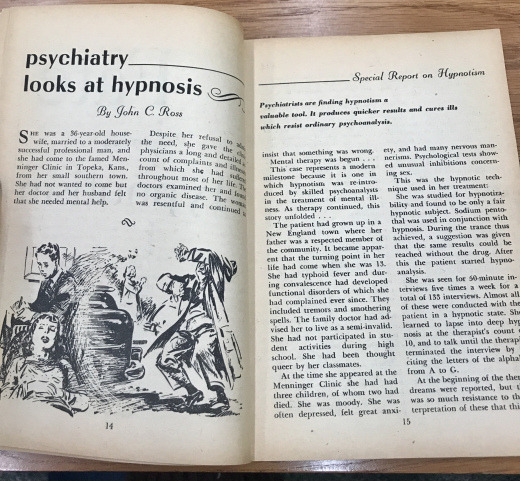
Figure 2: Psychiatry Looks at Hypnosis by John C. Ross
As you can see from Figure 2, the cover serves as a good indication of what is published within. In the piece, “Psychiatry looks at Hypnosis,” there is an illustration depicting a male psychiatrist conducting an evaluation on a troubled female figure. While she is not portrayed as provocatively as the female on the front cover, she is positioned in the foreground of the image. The focus remains on the female, while the psychiatrist remains in the background. While I am uncertain if Finlay’s cover art for this pulp was produced before the written content, that is my speculation based on this connection between the female figures in each.

Figure 3: The artwork of Van Dongen for Astounding Science Fiction
The other pulp artist that I came across offered a contrasting style with the art of Finlay. Van Dongen used a different method than the female physique to appeal to the largely male readership. He relied instead on a realistic style that matched the pulp editor, John W Campbell’s vision of a “more dignified” looking science fiction pulp (Gustafson, Nicholls, Westfahl, & Langford). Rather than illustrating a female in bright colors, he relied on the oddity of an alien creature sharing some brews with the captain of a ship (Figure 3). His colors are more dull and there is not one thing that sticks out more than others. This cover did not catch my eye in the same way, but it still serves a purpose. It is far less provocative than the cover of Fate Magazine which may suggest that the authors of Astounding Science Fiction (and its artists) made the effort appeal to those who are more interested in genre of Science Fiction itself.

Figure 4: An article found withing Astounding Science Fiction
As the front page had led me to guess, one of the pieces inside of this pulp seemed to be targeted toward those interested in the subject of science itself. On one of the first pages of this pulp, there was an article about an electric kit for “brainiacs” (Figure 4). There is an illustration of a male to go along with this, of course.
Virgil Finlay and Van Dongen were two distinguished pulp artists with very different styles. Finlay began his career in 1935 where he began doing interior magazine illustrations. In addition to this, he also illustrated the cover art of upwards of 60 magazine covers. He is well-known for both his mentioned black-and-white style as well as the color illustrations such as the one for Fate Magazine. He was nominated for seven Hugo Awards (science fiction literary awards) and inducted into the Science Fiction Hall of Fame in 2012. (Gustafson, Nicholls, & Westfahl). Van Dongen on the other hand, entered the science fiction field in 1950 after going to school and training in retouching photographs. During his career, he painted over 40 covers for Astounding Science Fiction as well as Worlds Beyond, Space Science Fiction, and Science Fiction Adventures. Van Dongen received the Hugo Best Artist award in 1959 for his work in Astounding Science Fiction (Gustafson, Nicholls, Westfahl, & Langford). Finlay and Van Dongen each made a name for themselves in the field of science fiction pulp. The similarity that they share is the ability of their artwork to draw in readers and to fuel the content of what lies on the pages within.
Works Cited:
Gustafson, Jon, Peter Nicholls and Gary Westfahl. “Finlay, Virgil.” The Encyclopedia of Science Fiction. Eds. John Clute, David Langford, Peter Nicholls and Graham Sleight. Gollancz, 18 Jan. 2017. Web. 19 Mar. 2018.
Gustafson, Jon, Peter Nicholls, Gary Westfahl and David Langford. “van Dongen.” The Encyclopedia of Science Fiction. Eds. John Clute, David Langford, Peter Nicholls and Graham Sleight. Gollancz, 2 Apr. 2015. Web. 19 Mar. 2018.
Parker, Charley. “The Dark and Light of Virgil Finlay.” Tor.com. N.p., 31 July 2013. Web.
“Pulp Magazine.” Wikipedia. Wikimedia Foundation, n.d. Web. 16 Feb. 2018.
-Lydia Belezos, undergraduate, University of Pittsburgh
28 notes
·
View notes
Text
Designers Australia 2021 Awards Winners
Designers Australia 2021 Awards Winners, DIA News, Best New Architecture
Designers Australia 2021 Awards Winners News
12 August 2021
Australian Interior Design Awards 2021 Winners
Design Institute of Australia releases groundbreaking Designers Australia 2021 Awards
Outstanding shifts in design by Bates Smart, DesignByThem, Monash University XYX Lab, and Edward Linacre.
The Design Institute of Australia (DIA) — Australia’s peak national design body, released the inaugural recipients for its Designers Australia 2021 Awards. The final winners out of a shortlist of seventy-four across the country, reflect the designer’s ability to make a strong contribution to a better world and include three national winners, a President’s Award and thirty-one awards of Merit. The awards, a first for the industry, identify Australia’s preeminent designers and studios, calling attention to the individual/s and their distinguished design processes as much as the outcome.
Bates Smart for Gandel Wing, Cabrini:
Bates Smart for Gandel Wing, Cabrini was awarded the ‘PLACE’ category winner, while DesignByThem for DL Range by Gibson Karlo and Dion Lee received the winning ‘USE’ award. Monash University Department of Design XYX Lab for HyperSext City won ‘INTERACT’, and product designer, artist and mentor Edward Linacre received the President’s Award.
DIA’s Designers Australia 2021 Awards are the culmination of months of evaluation, development and revisions. They are different in their categories and criteria to most of the design awards currently offered in Australia. The three groundbreaking cross-disciplinary design categories would have previously been categorised by traditional design disciplines such as industrial, interior, graphic, digital, product, environmental, textile, fashion, and many more.
DIA President Gavin Campbell FDIA said: “Since 1948, the Design Institute of Australia has been committed to nurturing and empowering designers. It is pleasing to see the culmination of these awards, responses in design shifts while also creating a platform for our collective future. The winning recipients and awards of Merit have all in their way embraced ethical, diverse and sustainable processes through collaborative and professional practice. Their projects are a testament to their values and entrepreneurship, and it’s our responsibility to identify and support them as design leaders and to demonstrate the value of design to the broader community.”
Bates Smart for Gandel Wing, Cabrini:
Shining a light with a new focus on Australian designers and their award winning responses to current community challenges.
Awards jurors, and internationally renowned Dutch trend forecasters and design educators Lidewij Edelkoort & Philip Fimmano also commented: “The Cabrini Malvern Hospital extension by Mark Healy the studio director of Bates Smart truly encapsulates our times; from the importance the medical sector plays in our lives to designing social spaces with wellbeing in mind. The new Gandel Wing’s natural finishes, rounded edges and neutral palette illustrate the power of buildings that can heal us. Considered lighting and attention to detail therefore become critical to care. The comforting interiors have been so thoughtfully reimagined that we thought it was a sustainable hotel concept — now that’s somewhere one should check-in! It’s time that hospital and hospitality go hand in hand.”
Tuba Kocaturk, awards juror, and professor of integral design said: “The DL Range by DesignByThem presents a timeless process of experimentation with form and materials which brings together functional and purposeful production techniques from fashion and industrial design, translated into an innovative marriage of comfort and inspirational design.
“The Monash University’s design, the HyperSext City, presents a series of interaction platforms where the design transcends being merely a product, but rather becomes a research and a communication platform, which informs, raise awareness and continually involves its users/audience in the evolution of the displayed content. Both projects are a testament to the changing role and position of design, moving from the traditional concept of a tangible product through to orchestration of new interactions and experiences.“
PLACE winner — Bates Smart for Gandel Wing, Cabrini identified for their exemplary approach to design by focusing on wellness and human-centred healthcare. Gandel Wing was praised as a place in partnership with nature and technology, encouraging healing rather than simply treating disease. The architects were honoured for responding to the hospital’s evolving needs by comforting the lives of many.
USE winner — DesignByThem for DL Range by Gibson Karlo collaborates between founders and industrial designers Sarah Gibson and Nicholas Karlovasitis and Australian fashion designer Dion Lee. The key objective of this project was to promote cross-disciplinary design by creating a unique body of work merging fashion and industrial design principles.
INTERACT winner — Monash University Department of Design for HyperSext City use design as an intersecting mediator, educational and collaborative tool giving voice to community members. The University’s XYX Lab was commended for its investigative exhibition encouraging and empowering people to comprehend and imagine complex issues together.
President’s Award — Multidisciplinary designer, artist, student mentor and former DIA Graduate of the Year recipient Edward Linacre applauded for his contribution to the profession, and commitment to diversity and equality across cultures, gender and race. He is a partner at Copper Design, which resides within Mycelium Studios, a co-working hub and place where designers coexist and learn from each other.
Industry leading jurors include Alessandra Baldereschil, Susanna Bilardo, Lisa Cahill, Gavin Campbell, Lidewij Edelkoort, Philip Fimmano, Marcus Fairs, John Gertsakis, Dr Rafael Gomez, Peta Heffernan, Fenella Kernebone, Tuba Kocaturk, Dr Scott Mayson, Nicole Monks, Lorenzo Palmeri, and Quan Payne.
The winning recipients, and the awards of Merit, are listed below. A link to the Designer’s Australia 2021 Awards ceremony can be found here
Designers Australia 2021 Awards jurors include Alessandra Baldereschil, Susanna Bilardo, Lisa Cahill, Gavin Campbell, Lidewij Edelkoort & Philip Fimmano, Marcus Fairs, John Gertsakis, Dr Rafael Gomez, Peta Heffernan, Fenella Kernebone, Tuba Kocaturk, Dr Scott Mayson, Nicole Monks, Lorenzo Palmeri, and Quan Payne. The awards sponsors are Dulux Acratex and Woods Solutions.
For further information, please visit https://ift.tt/3sb5nPE
PLACE category winner, representing the spaces we live, work, and play Bates Smart for Gandel Wing, Cabrini
PLACE Awards of Merit: -Billard Leece Partnership and Diller Scofidio + Renfro for Susan Wakil Health Building -Comunitl for Davidson -Cox Architecture for Parmelia Hilton Hotel -Cox Architecture for Sydney Coliseum Theatre, West HQ -Cox Architecture and Neeson Murcutt + Neille for Australian Museum Project Discover -Danielle Brustman for Brighton Street Early Learning -DesignInc Adelaide for DesignInc Adelaide Studio -Elenberg Fraser for Market Lane -Latitude for SBB -Mata Design Studio for Applecross Residence -Mycelium Studios for Mycelium Studios -Naomi Milgrom Foundation and Glenn Murcutt for MPavilion 2019 -Phillips/Pilkington Architects for Gunditj Mirring Keeping Place -Russell & George for Sarah & Sebastian -Skeehan Studio for Canberra Glassworks Shop -studio-gram for The Guardsman -Walter Brooke & Associates and Genesin Studio for iTL -Walter Brooke & Associates and Hecker Guthrie for EOS -Woods Bagot for Central Park Tower Refurbishment -Zwei Interiors Architecture for body of work
USE category winner describing things we use DesignByThem for DL Range by Gibson Karlo and Dion Lee
USE Awards of Merit: -Cobalt Design for KeepCup Thermal Cup & Press Fit Lid -DesignByThem for August Lounges by Gibson Karlo -Hare + Klein for Bridge Table -JamFactory for Solute Pendant Light -JDT Design for LEGO 3D printed Spinner -Naomi Milgrom Foundation and BoardGrove Architects for MPavilion 2020 Stool Dolly -Skeehan Studio for NAVE Collection -Yellow Goat Design for H2O
INTERACT category winner depicting what or who we interact with -Monash University XYX Lab for HyperSext City
INTERACT Awards of Merit: -Black Squid Design for A-Lure Gin -Ian Wong for 100 Objects & I-CONIC -United Studio for Markr
President’s Award -Edward Linacre for contribution to the profession
25 May 2021
Australian Interior Design Awards 2021 Shortlist
Design Institute of Australia releases groundbreaking Designers Australia 2021 Awards
Australian Interior Design Awards 2021 Shortlist
Images courtesy of DIA
Place representing the spaces we live, work, and play:
Bates Smart for Gandel Wing, Cabrini;
Cox Architecture for Transurban Workplace;
Cox Architecture for Sydney Coliseum Theatre, West HQ;
Cox Architecture for 2 Market Street Lobby;
Cox Architecture for Australian Museum Project Discover;
Cox Architecture for Eagle Workplace;
Glenn Murcutt for MPavilion 2019;
Ohlo Studio for Dune House;
Phillips/Pilkington Architects for Gunditj Mirring Keeping Place;
Stephen Varady Associates for Nasteski Apartment;
studio-gram for Fino Vino restaurant, Adelaide, South Austrlia;
studio-gram for Hotel Indigo;
Walter Brooke & Associates for EOS by SkyCity;
Woods Bagot for Central Park Tower Refurbishment;
Zwei Interiors Architecture for body of work – pictured, Citizen.MDW:
Burgmann Anglican School – Early Learning Centre: photo : Anne Stroud
ACMI Renewal: photo : Shannon McGrath
The Mercy Centre Mater Private Hospital Townsville: photo : Andrew Rankin
Rouse Hill Childcare, New South Wales: photo : Ross Honeysett
Spring Bay Mill – The Banksia Room, Tasmania: photo : Samuel Shelley
2021 Australian Interior Design Awards Shortlist images / information received 120821
Location: Australia
Australian Interior Design Awards Winners
Australian Interior Design Awards 2020
2020 Australian Interior Design Awards Shortlist
photographs : Trevor Mein
Premier Award winner – Indigo Slam NSW house: photos : David Roche
Indigo Slam, NSW, by Smart Design Studio: photo : David Roche
Australian Architectural Design Awards
Australian Design Awards
Australian Institute of Architects National Architecture Awards
Australia Award for Urban Design
Australian Urban Design Awards 2017 Shortlist
New South Wales Architecture Awards
South Australian Architecture Awards
New South Wales Architecture Awards
Australian Architecture
Australian Architecture Designs – chronological list
Australian Architecture
Australian Architect
Interior Design
Contemporary Interiors
Interiors
Interior Designs
Architecture Awards
American Institute of Architects Gold Medal
RIBA Gold Medal Award
New Zealand Architecture
New Zealand Architects
Comments / photos for the Designers Australia 2021 Awards Winners page welcome
The post Designers Australia 2021 Awards Winners appeared first on e-architect.
0 notes
Photo



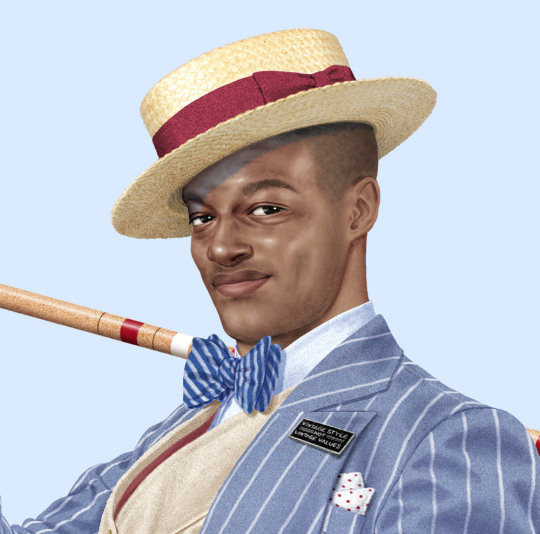





A Dandy Wellington and Jason Raish collaboration. 100% of proceeds donated to The FIT Black Student Illustrators Award fund. These timed editions are available for 1 week only, never to be printed again (edition size determined by final sale number). Sales open 2022 May 6th @12:00pm EST and close May 13th @12:00pm EST. www.jason-raish-illustration.myshopify.com/
$1,000 no-strings-attached awards will be given to Black student applicants displaying artistic merit and financial need graduating from New York’s Fashion Institute of Technology BFA illustration program. Recipients can do as they please with the award money as there’s no one way to reach your artistic goals. Recent data from The Illustrators Survey shows that 3% of the illustration industry is Black. Our goal is to help Black students bridge the gap between graduation and professional success so they can be seen, heard, and shape the narrative of this industry they are so underrepresented in.
If you want to make an individual donation please go to www.fitnyc.edu/give and be sure to use the drop down menu to select the Black Student Illustrators Award. There is an option to type in a custom donation amount and it is a 501(c)(3) organization.All the accounting and final amount of proceeds will be transparently and publicly shown and the final number of prints in the edition announced.
I continued my Croquet and Ink series and created 2 illustrations exclusively for this fundraiser. This series takes the stuffy, conservative, homogenous nature of vintage high fashion and sets it alongside the rebellious self expression of tattoos (Japanese Ukiyo-e inspired). Add the historically upper crust game of croquet and you’ve got Croquet and Ink. As Dandy Wellington says: Vintage Style NOT Vintage Values. This time I illustrated the man himself and he styled the outfits as well.
In the summer of 2020 I found myself feeling paralyzed and useless during the renewed social justice movement and wanted to do something. Dandy Wellington and I have known each other for a few years and when he issued his #BlackApparelArts challenge I thought maybe the best thing I can do as an illustrator is fundraise with my art. I had just started teaching at FIT (my alma mater), we got together, ruminated, slapped our knees and said, this whole thing was born of illustration why don’t we get hyper-local and and support Black illustration students at FIT! We got to work and months later here we are.
The fund was created under the FIT Foundation 501(c)(3) charitable giving arm. We've partnered with FIT's own PrintFX print lab for the 12x18” Epson giclée 192 g/m matte archival prints to be signed and numbered. I've also partnered with Framebridge to provide framing. I personally use them a lot and make no money from this, I just want people to have a nice time and alleviate the hassle of getting things framed. Proceeds from Framebridge (which is the 10% discount they give me) will be donated, 100% of print proceeds will be donated. For Prints: Save on shipping when you order two or more. For Frames: Free shipping provided by Framebridge when you buy a frame. I ship them the signed print, they frame it and ship it to you. Please allow 4-6 weeks for shipping as it's just me packing and shipping orders, on top of Framebridge's processing time.
Purchasers and donors are encouraged to leave a comment/note/encouragement at the checkout screen for the future recipients of this award and I will make sure they receive them. Hopefully this initiative is a start to diversifying the illustration industry and getting some great art for your walls at the same time!
#vintage fashion#men's apparel#men's style#menswear#mensfashion#vintage style#women's style#women's fashion#vintage life#dandy wellington#jason raish#fashion institute of technology#black student illustrators award#FIT black student illustrators award#illustration#fashion illustration#fashion illustrator#black apparel arts#dandyism#representation matters#vintage style NOT vintage values#womenswear#croquetas#tats#tatted#tatted up#inked#inked up#tattoo#tattooed
42 notes
·
View notes
Text
In the 50-Day Spiritual Adventure, "Daring to Dream Again" your entire congregation will journey into God's life-changing Word. You'll unfold ways to dream again spiritually. You'll teach people how to live up to the desires God has for each of us and overcome barriers that hold your church back from its enormous God-given potential. Infuse everyone with new life and spiritual energy as you investigate the biblical, heartfelt aspirations God has on our behalf. In the process, overcome the sermon-sucking Black Hole by equipping your people to remember your sermons and practice what you preach each Sunday. Our Preacher's Starter Kit contains everything you need to unfold this series from the pulpit. Purchase this to get started (or consider ordering our Daring to Dream Again - Sermon Series Deluxe Campaign Kit instead - which contains the Preacher's Kit and much more). Included are the following: 1. Our comprehensive, printed and published Pastor's Manual in a three-ring binder contains nearly 300 pages of sermon and worship service ideas to help you preach and teach this "Daring to Dream Again" Adventure. It contains: Helpful Sermon Manuscripts - You'll receive two sets of fully scripted sermons for all eight messages created by pastors who preached this series recently. Use them as idea starters to fashion your own messages; Relevant Illustrations - Our pastor team has provided you with numerous stories and quotes to enhance your Adventure messages. You also get sermon sketches and children's sermons coordinated to fit the overall Adventure themes; Life-Changing How-to's - We provide you with proven, powerful ways for your congregants to apply your Sunday sermons. Your people will learn to become doers of God's Word as they go on a daily God Hunt, take on healthy new identities, set godly goals, go for the gulp, and begin dreaming again spiritually; Dynamic Service Ideas - This worship section has a wealth of helps, including hymn and praise song suggestions, calls to worship, dynamic Scripture readings, prayers, mood setters, and more, all chosen to be in harmony with your Sunday messages; Powerful Dramas - Our award-winning drama team has created eight fully scripted dramas to set up the Adventure themes or enhance your preaching. 2. One Pastor Manual on CD-ROM for cut and paste flexibility 3. One Preaching Preparation CD 4. One Sermon Summary Bulletin Inserts CD 5. Two Adult journals, Daring to Dream Again 6. Two Student journals, Life More Better 7. One Adventure Guidebook, Never Too Late to Dream
0 notes
Text
#13 Who Was? book Who Was J.R.R Tolkien? By Pam Pollack and Meg Belviso
Image
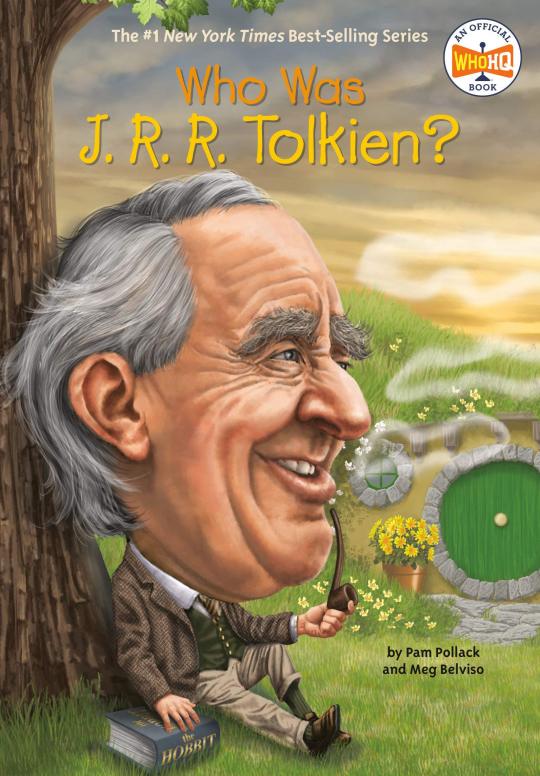
Justification
Who Was J.R.R Tolkien? by Pam Pollack and Meg Belviso is a fun biography on the life of J.R.R Tolkien. It has not won any awards, however, the subject is interesting and would appeal to young fans of fantasy. I chose this book since I am a fan of his works and I was curious about how fun this biography could be. It is an enjoyable biography and makes dull biographic information entertaining. Despite being an adult reader of this book, I found it funny and informative.
Evaluation of book
The plot of the book follows the life of J.R.R Tolkien from his birth to his death. The plot is written in a very engaging way that makes even the less interesting parts of his life fun to read about. In addition to the general biographical information about his life, the book includes several informational boxes that provide more information about mentioned events and things that were significant in Tolkien’s life. The book begins with one of the moments that would greatly change Tolkien’s life, his first spark of creativity that would lead to him writing The Hobbit. The book also features an emphasis on his passion for linguistics and languages and mentions that although he is known for his books, he still loved languages. The book introduces his love of linguistics by describing how he wanted to create his own languages and returns to his everlasting love of linguistics by writing that Oxford’s awarding of him an honorary doctorate degree for his work in studying historical languages “perhaps meant the most to him, because it was the only one he received that wasn’t for the Lord of the Rings.” This statement clearly shows that although Tolkien appreciated the attention he got for his fantasy novels, he also wanted recognition for his work in other areas of interest. These small details included in the book reveal a great deal about Tolkien’s personality and his life beyond the fact that he wrote the Lord of the Rings and the Hobbit. Also, the book conveniently includes a brief, comprehensive timeline of Tolkien’s life and major world events that were significant.
The characters in the book are all real-life individuals who interacted with J.R.R Tolkien during his life. The protagonist is J.R.R Tolkien and from his first appearance in the book, he is presented as a humble and imaginative man. He is very educated and knowledgeable in many subjects, however, he has to take on extra work to support his family before beginning his books. Additionally, his wife is written to clearly portray her kind and considerate nature. Instead of telling the reader that she made compromises so Robert could be happy living at Oxford, the author only writes that she did not enjoy living in Oxford, however, she lived there for decades while he was a professor at the college. Throughout the book, the author makes it obvious that Edith deeply loves Robert by describing her actions. One memorable example is when she leaves her fiance to be with Robert after she had given up on waiting for him. Additionally, the book provides a brief but very comprehensive description of each individual when they first appear.
The illustrations in the book are done in a unique style of black and white sketches. These sketches suit the comfortable mood of the book and add a vintage feel that matches the time period Tolkien lived in. The illustrations provide emotion to the story and allow the reader to visualize some of the important events that occurred during his life. For instance, the text mentions how Ronald moved back to England from war to spend time with his wife in time for Christmas. The words themself do not convey as much meaning that is illustrated in the picture of Ronald sitting on the couch with his wife leaning against him as snow falls outside their window. The illustrations also extend the plot by including small drawings alongside informational text boxes that provide information on the context of a certain event or item. Additionally, several illustrations throughout the book are of maps and drawings of the fictional places of the Lord of the Rings series. These enhance the reading experience and pay homage to Tolkien’s most famous work.
Conclusion
I would recommend this book to older elementary students and middle school students who are already fond of Tolkien’s books or the movie adaptions. Also, this book is so entertaining despite it being a biography that even children who are not familiar with Tolkien may enjoy the book as well. The book is written well and accurately provides the facts of Tolkien's life. The illustrations perfectly fit with the text and make the emotions of the characters clear.
Citation
Pollack, P. & Belviso, M. (2015). Who Was J. R. R. Tolkien? Turtleback Books.
0 notes
Link
Rajie Cook, Who Helped Make Sense of Public Spaces, Dies at 90 Rajie Cook often joked that museumgoers were more likely to encounter his artwork in their travels than a portrait by Matisse or a landscape by van Gogh. They saw it whenever they took an elevator to an upper gallery or stopped in the restroom. In 1974 Cook & Shanosky Associates, a design firm started by Mr. Cook and Don Shanosky a few years earlier, won a contract to develop a set of symbols that could be universally understood, and that would efficiently convey the kinds of information people in a public place might need — which restroom was for which gender, the location of the nearest elevator, whether smoking was permitted and so on. The signage the two came up with, 34 pictographs (with others added later), is still in use today: the generic male and female figures; the cigarette in a circle with the red line through it; the minimalist locomotive and plane to signify train station and airport. But Mr. Cook’s artistic interests went well beyond utilitarian signs. By the time Cook & Shanosky folded in 2002, Mr. Cook had already begun dabbling in a different sort of art, creating three-dimensional sculptural assemblages — boxes incorporating found objects. Most of them were inspired by his exploration of his own heritage as the son of Christian Palestinian immigrants, and by what he saw on his many trips to the Middle East. He thought of the works, which have been exhibited in museums and galleries, as “art activism.” One box contained the names of children who had been casualties of the continuing Israeli-Palestinian conflicts, with the bottom quarter of the box filled with spent cartridges. Some of the children were Jewish, but most were Palestinians, something Mr. Cook thought was not reflected in coverage by American news outlets. “Only part of the story is being told,” he said in a 2018 interview with Palestine Museum US in Woodbridge, Conn. Mr. Cook died on Feb. 6 at a hospice center in Newtown, Pa., near his home in Washington Crossing, his family said. He was 90. For much of his career, Mr. Cook was known as Roger Cook, thanks to a fourth-grade teacher’s whim. “My teacher thought Rajie was too difficult to pronounce,” he recently told Bucks County magazine, “and suggested that I be called Roger instead. In a flash, my birth name was changed, but my parents raised no objections in deference to the educator.” Only decades later, when he began exploring his heritage through art, did he revert to his given name. His last name, too, was someone else’s idea, imposed on the family long before his birth. His paternal grandfather’s last name had been Suleiman, but he was given the nickname Kucuk, the Turkish word for small, by Turkish occupiers because of his small stature; later, when the British occupied Palestine, they turned that into Cook. Rajie Cook was born on July 6, 1930, in Newark to Najeeb and Jaleelie (Totah) Cook. His interest in art manifested itself early. “In grammar school, I was usually the student who sat in the back row, sketching and drawing while the teacher and the rest of the class were focused on other subject matter,” he wrote in “A Vision for My Father,” a memoir published in 2016. After graduating from Bloomfield High School in New Jersey in 1949, he enrolled at Pratt Institute in New York, where he earned a degree in 1953. In 1960, while he was working for a Philadelphia advertising agency, N.W. Ayer & Son, a freelance illustrator named Don Shanosky was assigned to one of his projects. Mr. Cook moved to the New York design company Graphic Directions in 1962, and in 1965 he again encountered Mr. Shanosky, who was applying for a job there, which he won. In 1967 the two struck out on their own, forming Cook & Shanosky Associates and setting up shop in Manhattan. Mr. Shanosky, who now lives in Florida, said in a phone interview that they ran an announcement in Graphis Magazine about the new firm. “The image that we used kind of sums up how he and I related to one another,” he said. “It was two hands, one pencil. That kind of symbolized how we worked.” Their designs, whether for annual reports, advertisements or a government client, were always joint efforts, not credited to one or the other. And their philosophy was straightforward. “We held firm to the principle that design communicates to its maximum efficacy without frills, contrivances and other extraneous material,” Mr. Cook wrote in his book, “that if the core idea is a good one, it will shout loudest when it is not overshadowed by ornamentation.” That philosophy was a good fit for the pictogram assignment. The project was intended to prepare for the American bicentennial celebration, which was expected to draw a lot of foreign visitors who would need help navigating airports, historic sites and other public spaces. The effort was overseen by the Department of Transportation and the American Institute of Graphic Arts (now known simply as AIGA), and that meant there were a lot of eyes on Cook & Shanosky, which at the time was still a small shop. The firm was given parameters about what the symbols needed to do, and it drew on existing symbols from throughout the world. “We kept in mind that people seeing the pictographs would be speaking different languages, using different alphabets,” Mr. Cook wrote, “and in some cases were illiterate.” Once the initial designs were offered came the review by a committee, which had plenty of opinions. “Because most of the committee were designers themselves, there was a lot of, ‘Did you try this?’” Mr. Shanosky recalled. The committee members came armed with a roll of black tape and a roll of white tape. “They would say, what if this was moved there, or what if this were shorter,” he said. “They would cover up our black symbol with white tape to make it shorter, or use black tape to make it longer” — before, usually, agreeing on something very much like what he and Mr. Cook had initially presented. Mr. Cook reproduced some of the notes the firm received from these reviews in his book, including these ones regarding the symbol for drinking fountain, a figure bent at the waist over a stylized depiction of a fountain: “Figure: Lower body out of proportion with trunk.” “Is arm necessary?” “Arm necessary to indicate that figure is not bowing.” In 1985 President Ronald Reagan presented Mr. Cook and Mr. Shanosky with an award for “outstanding achievement in design for the government of the United States.” Mr. Cook is survived by his wife, Margit (Schneider) Cook, whom he married in 1955; two daughters, Cynthia Rhodin and Cathryn Cook; three siblings, Lillian, Wade and Edward Cook; three grandchildren; and a great-grandson. Mr. Cook said he took up making sculptural assemblages after encountering the work of the artist Joseph Cornell, who was known for his shadow boxes. Mr. Cook’s work was featured in numerous exhibitions, including one called “Made in Palestine” in 2003 at the Station Museum of Contemporary Art in Houston. “I remember my dad — he died at the age of 94 — old and blind and sitting by the radio saying he was waiting to hear something good on the radio about peace in the Middle East,” Mr. Cook told The New York Times in 2004, when he was interviewed about the controversies sometimes caused by exhibitions of Palestinian art. “I’m 74, and I don’t know if I’ll ever hear it either. I don’t want to die at 94 still waiting for peace.” Source link Orbem News #cook #Dies #Helped #public #Rajie #Sense #Spaces
0 notes
Text
New from Every Movie Has a Lesson by Don Shanahan: MOVIE REVIEW: The Trial of the Chicago 7
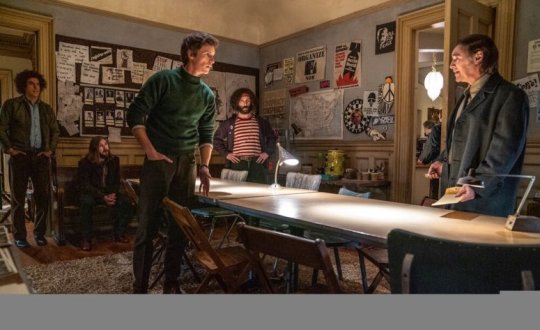
(Image courtesy of Netflix)
THE TRIAL OF THE CHICAGO 7— 5 STARS
Not if, but when, you watch The Trial of the Chicago 7 on Netflix, know that, like all movies based on historical events, what you’re watching is a cherry-picked and tidy two-hour dramatization of legal proceedings that lasted just short of 150 days. Normally when that happens, the dramatic license to make an entertaining product has added any number of embellishments for showmanship’s sake. Folks love the challenge, especially in a courtroom movie, of sniffing out the sugarcoating to wonder “did that really happen?” up and down every narrative peak and valley. The crazy thing is the exact opposite is happening here from Aaron Sorkin.
LESSON #1: THE WHOLE STORY IS ALWAYS MORE THAN WE SEE IN A MOVIE— The courageous antics and challenging tactics seen in the varnished 129 minutes of The Trial of the Chicago 7, are just a fraction of what really transpired in this raucous real-life case. It was wilder than this. It was worse than this. For a single example statistic, the eight defendants and their lawyers racked up 159 counts of criminal contempt. The movie shows you under ten of them.
Watch the acting confrontations, observe the reenacted testimonies, and soak up historical perspective, but then go read further official accounts and records afterward. Throw in the civic importance of Medium Cool as a cherry on top. Call it due diligence. Call it praise confirmation as well.
When you do yourself that favor and make that follow-up effort, you will be astonished at what Sorkin and his fellow creators honed as well as what didn’t make the film. There are plenty of instances where missing so much potential material could be considered a flaw. That’s not here. The Trial of the Chicago 7 loses zero of the peace-branded activism and emboldened essence with its brilliant composition to make a commanding, impressive, and affirming viewing experience.
For those light on their history, the 1968 Democratic National Convention hosted in Chicago was marred by public strife between protest groups and the Chicago Police, much of it caught on cameras while the world was watching. For many, it was the pigs versus the pariahs. When the tear gas cleared and Nixon won the ensuing election, federal conspiracy to incite violence charges were levied by the new U.S. Attorney General John Mitchell (an opening cameo from William Hurt) and his prosecution team Richard Schultz (Joseph Gordon-Levitt) and Tom Floran (character actor J.C. Mackenzie).
The targets were a mix of staunch antiwar influencers deemed “petulant,” “dangerous,” “unprofessional,” “unpatriotic,” and “impolite” by Mitchell. Among them are two duos of large-scale organizers with opposing dispositions. Tom Hayden (Oscar winner Eddie Redmayne) and Rennie Davis (rising actor Alex Sharp) were two straight-laced members of the Students for a Democratic Society (SDS).
The “Mobe” Dems commonly butted philosophical heads with the free-wheeling sarcasm of the “Yippies” (Youth International Party) faction lead by Abbie Hoffman (an invested Sacha Baron Cohen) and Jerry Rubin (newly minted Emmy winner Jeremy Strong of Succession) despite the same tangential aims. The middle man and occasionally neutral voice of reason was co-defendant and conscientious objector David Dellinger (John Carroll Lynch). All were represented in court by civil rights attorneys William Kuntsler (Oscar winner Mark Rylance) and Leonard Weinglass (TV mainstay Ben Shenkman).
The most maligned member of the accused was the co-founder of the Black Panthers himself, Bobby Seale (new Watchman Emmy winner Yahya Abdul-Mateen II), flanked often by Illinois chapter chairman Fred Hampton (the Everywhere Man of Kelvin Harrison Jr.). Detained for another pending criminal charge while the others have made their cushy bail, Seale was trapped silent in this trial without legal representation and disallowed by the Honorable Julius Hoffman (Frank Langella) from cross-examining witnesses or making statements. He was the separate eighth of what became the titular septet.
Fueled in fits and spurts by a peppy score from composer Daniel Pemberton, the back-and-forth arguments of the case trigger expositional flashback sequences of the events before, during, and after the fateful August riots from the various points of view. The spoken details and filmed set pieces are, through the deft editing from Alan Baumgarten (American Hustle), interlaced with the archival parallel footage from the real history. Those splashes of black-and-white violence remind viewers of the gravity behind the potential farce. As the trial drags on, the case presents more and more conflicting purposes and damning blame.
LESSON #2: REVOLUTIONS MAY HURT FEELINGS— As Abby Hoffman will jest, they’re not meant to be easy. He and his rhetoric consider this to be a political trial of the cultural revolution that he believes should be evolving to an actual one that usurps the government. Ruffling feathers is only the beginning and this trial is a springboard to draw the proper attention. He’s the type of shifty and enigmatic presence to catch every egg meant for his face and splatter them on his critics’ faces instead, be them friend or foe.
LESSON #3: THE PRICE OF REVOLUTION IS LIVES— While public spectacle invaded the legal arena, this was no kangaroo court. The charges and risks were real. These men were facing a decade of jail time eating away the primes of their twenties and thirties. Livelihoods count as lives, but at least the eight on trail would have them. The same could not be said for the thousands of casualties in Vietnam that grew by the day. Wants, desires, votes, and issues aside, lost lives sparked these rallies and protests. The present day could learn from the events of a half-century ago. It shouldn’t take an international war to bring true change when the conflicts are right here locally.
LESSON #4: WATCH YOUR MOUTH— Be it in court, on tape, out on the streets, or one-on-one with a rival, get your words right. Frame your argument and positions. Pick your battles and, most importantly, speak up no matter the consequences if your beliefs are solid. These eight men had not only such sly wherewithal, but the moral conviction of ideals to stand behind their every vocalized breath publicly and under every bright light of scrutiny. This would be the complete opposite of the anonymous “internet courage” of today.
With this being an Aaron Sorkin film, the words are the best part. The Academy Award-winning writer (The Social Network) turned filmmaker (Molly’s Game) has always had something beyond the normal gift of gab. Known and celebrated for his staccato assaults of barbed conversations, the punches of his The Trial of the Chicago 7 script linger longer than his usual pacing. To a marvelous effect, performance scenes stretch taller, lifted by wisely chosen imaginary moments of stumps and pontiffs. Such opportunities created arguably the best ensemble acting showcase so far this year.
From the most flippant to the most cantankerous, not a single cast member misses their mark or weakens any chain. With every low-registered pronouncement and irksome removal of his eyeglasses, Frank Langella puts on a clinic for the evil slow boil. Those pitted against him exude their ranges of indignation for complementary combinations. The flamboyance of Sacha Baron Cohen, the spry spirit of Mark Rylance, and the passionate postulating of Eddie Redmayne all come from distinctly opposition character viewpoints and backgrounds. Yet, every clash of differences only tightens the cohesions of their unified cause and thickens the performances. And, for a Sorkin film, you can bet every syllable is measured to millisecond for maximum effect.

LOGO DESIGNED BY MEENTS ILLUSTRATED (#910)
Permalink
from REVIEW BLOG – Every Movie Has a Lesson https://ift.tt/3n0lFrI via IFTTT
from WordPress https://ift.tt/2RXc9Hs via IFTTT
0 notes
Photo
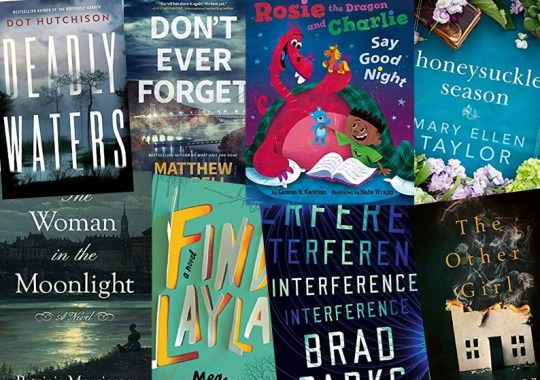
Amazon First Reads for August 2020
This month with Amazon First Reads we are back to a choice of eight books again after being given nine books to choose from last month. So if your an Amazon Prime Member like me you can choose which Amazon First Read book download for free.
This months choices are:
Psychological Suspense
The Other Girl by C D Major, Pages: ??? Publication Date: 1 September 2020
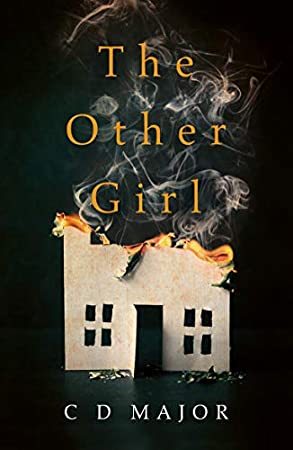
Synopsis: They thought she was insane. But what if she was telling the truth?
1942, New Zealand. Edith’s been locked away for a long time. She was just five years old when she was sent to Seacliff Lunatic Asylum. Fifteen years later, she has few memories of her life before the asylum, but longs for one beyond it.
When she survives a devastating fire that destroys her ward, Edith is questioned by the police and a young doctor, Declan Harris. Intrigued by his beautiful patient, Declan begins to doubt the official reasons for her incarceration. Is she truly mad—or could the impossible stories she told as a child actually be true?
Time is running out. With Edie awaiting a new and permanent treatment, soon there will be little of her left to save. Meanwhile intrigue has tipped into obsession—Declan needs to uncover the truth, but in doing so he will risk losing everything. As he sets out to save her mind, will he lose his own?
Police Procedural
Don’t Ever Forget by Matthew Farrell, Pages: 384, Publication Date: 1 September 2020

Synopsis: From the bestselling author of What Have You Done comes a mind-bending page-turner involving a series of dark crimes from the past.
When police investigator Susan Adler is called to the roadside murder of a fellow state trooper, she’s tasked with finding the people responsible for the cold-blooded act caught on the trooper’s dashboard cam. She traces the car to a nurse who, along with her elderly patient, has been missing for days. At the old man’s house, she finds disturbing evidence that instantly revives two cold cases involving long-missing children.
The investigation takes a chilling turn when people involved with both the nurse and old man begin to turn up dead, and Susan enlists the help of her friend and forensic investigator Liam Dwyer. Together they must untangle the threads of this ever-more-complicated case—and stay ahead of whoever’s trying to slash their progress. The old man’s failing memory adds urgency: wherever he is, he’s no doubt lost, confused, and in extreme danger.
What started as a traffic stop gone wrong quickly unfolds into one of the darkest cases of Susan’s career, and it all leads to a sick, desperate killer. Susan and Liam must work fast to save the old man’s life and keep future victims from the killer’s grasp.
Thriller
Deadly Waters by Dot Hutchison, Pages: 302, Publication Date: 1 September 2020
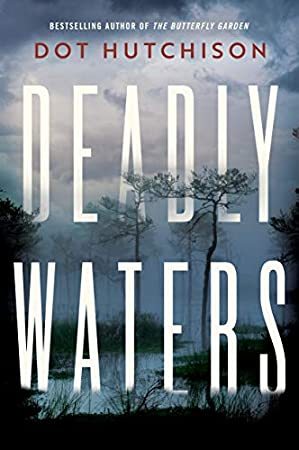
Synopsis: From the bestselling author of The Butterfly Garden comes a suspenseful new series for the #MeToo era about vigilante justice, close friends, and getting away with murder.
Florida journalism undergrad Rebecca Sorley is like any other college student. She tries to keep up with her studies, her friends, and her hot-tempered roommate, Ellie, who regularly courts trouble with the law.
When a male student’s remains are found in alligator-infested waters, the university warns students to stay away from the reptiles. But then a second body shows up, and the link is undeniable. Both men belonged to the same fraternity and had a reputation for preying on and hurting women.
Ellie has previously threatened to kill men who don’t take no for an answer. Rebecca and her friends thought Ellie was kidding. But now a vigilante killer is roaming campus—someone who knows how to dispose of rapists. Someone determined to save female students from horrible crimes.
With each passing day, those who know Ellie become more convinced she’s responsible. But if she is, stopping her might not be in everyone’s best interest…
Technothriller
Interference by Brad Parks, Pages: 397, Publication Date: 1 September 2020

Synopsis: From international bestselling author Brad Parks comes an emotional, heart-pounding thriller that explores the scientific unknown—and one woman’s efforts to save her husband from its consequences.
Quantum physicist Matt Bronik is suffering from strange, violent seizures that medical science seems powerless to explain—much to the consternation of his wife, Brigid.
Matt doesn’t think these fits could be related to his research, which he has always described as benign and esoteric. That, it turns out, is not quite true: Matt has been prodding the mysteries of the quantum universe, with terrible repercussions for his health. And perhaps even for humanity as a whole.
Then, in the midst of another seizure, Matt disappears. When foul play is feared, there is no shortage of suspects. Matt’s research had gained the attention of Chinese competitors, an unscrupulous billionaire, and the Department of Défense, among others.
With Matt’s life in clear danger, Brigid sets out to find him. Will Matt be killed before she reaches him, or could the physics that endangered him actually be used to save his life?
Contemporary Fiction
Honeysuckle Season by Mary Ellen Taylor, Pages: 343, Publication Date: 1 September 2020
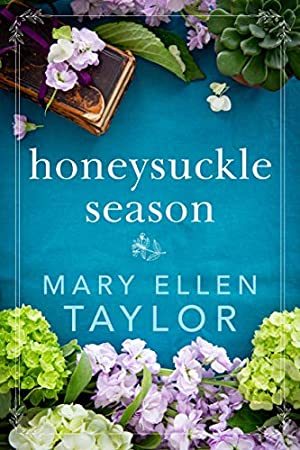
Synopsis: From bestselling author Mary Ellen Taylor comes a story about profound loss, hard truths, and an overgrown greenhouse full of old secrets.
Adrift in the wake of her father’s death, a failed marriage, and multiple miscarriages, Libby McKenzie feels truly alone. Though her new life as a wedding photographer provides a semblance of purpose, it’s also a distraction from her profound pain.
When asked to photograph a wedding at the historic Woodmont estate, Libby meets the owner, Elaine Grant. Hoping to open Woodmont to the public, Elaine has employed young widower Colton Reese to help restore the grounds and asks Libby to photograph the process. Libby is immediately drawn to the old greenhouse shrouded in honeysuckle vines.
As Libby forms relationships and explores the overgrown—yet hauntingly beautiful—Woodmont estate, she finds the emotional courage to sort through her father’s office. There she discovers a letter that changes everything she knows about her parents, herself, and the estate. Beneath the vines of the old greenhouse lie generations of secrets, and it’s up to Libby to tend to the fruits born of long-buried seeds.
Young Adult
Find Layla by Meg Elison, Pages: 185, Publication Date: 1 September 2020
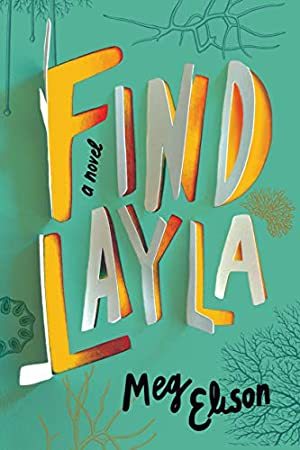
Synopsis: A neglected girl’s chaotic coming-of-age becomes a trending new hashtag in a novel about growing up and getting away by an award-winning author.
Underprivileged and keenly self-aware, SoCal fourteen-year-old Layla Bailey isn’t used to being noticed. Except by mean girls who tweet about her ragged appearance. All she wants to do is indulge in her love of science, protect her vulnerable younger brother, and steer clear of her unstable mother.
Then a school competition calls for a biome. Layla chooses her own home, a hostile ecosystem of indoor fungi and secret shame. With a borrowed video camera, she captures it all. The mushrooms growing in her brother’s dresser. The black mould blooming up the apartment walls. The unmentionable things living in the dead fridge. All the inevitable exotic toxins that are Layla’s life. Then the video goes viral.
When Child Protective Services comes to call, Layla loses her family and her home. Defiant, she must face her bullies and friends alike, on her own. Unafraid at last of being seen, Layla accepts the mortifying reality of visibility. Now she has to figure out how to stay whole and stand behind the truth she has shown the world.
Literary Fiction
The Woman in the Moonlight by Patricia Morrisroe, Pages: 381, Publication Date: 1 September 2020

Synopsis: A stirring and romantic historical novel about nineteenth-century Vienna and the tragedy and dynamic passion that inspired Ludwig van Beethoven’s Moonlight Sonata.
Vienna, 1800. Countess Julie Guicciardi’s life is about to change forever. The spirited eighteen-year-old is taking piano lessons with Ludwig van Beethoven, the most talented piano virtuoso in the musical capital of Europe. She is captivated by his volatile genius, while he is drawn to her curiosity and disarming candour. Between them, a unique romance. But Beethoven has a secret he’s yet to share, and Julie is harbouring a secret of her own, one so scandalous it could destroy their perfect love story.
When Beethoven discovers the truth, he sets his emotions to music, composing a mournful opus that will become the Moonlight Sonata. The haunting refrain will follow Julie for the rest of her life.
Set against the rich backdrop of nineteenth-century Vienna, The Woman in the Moonlight is an exhilarating ode to eternal passion. An epic tale of love, loss, rivalry, and political intrigue. A stirring portrait of a titan who wrestled with the gods and a woman who defied convention to inspire him.
Children’s Picture Book
Rosie the Dragon and Charlie Say Good Night by Lauren H Kerstein, Illustrator Nate Wragg, Pages: 42, Publication Date: 1 September 2020

Synopsis: Rosie the dragon and Charlie are ready to tackle bedtime—dragon-style!
Rosie the dragon’s bedtime routine has been a little bumpy lately. But not to worry! Charlie is prepared with his lists, rules, and fire extinguisher—everything a boy needs to help guide his pet dragon (and best friend) to a peaceful night’s sleep. But with bath-time bubble trouble, fiery-hot pyjamas, and stuffed animal search-and-rescues, tucking this dragon into bed is not an easy task. And what happens when thunder strikes? Snuggle up with this adorable duo as they conquer bedtime the best way: together!
*** Which book will you choose? I have no idea which book I’ll choose as none of them so far stand out to me! ***
#AmazonFirstReads, #Amazonkindle, #AmazonPrimeMembers, #Books, #ChildrensPictureBook, #ContemporaryFiction, #Kindle, #KindleBooks, #LiteraryFiction, #PoliceProcedural, #PsychologicalSuspense, #Technothriller, #Thriller, #YoungAdult
0 notes
Photo

New Kid written and illustrated by Jerry Craft
“You don't have to like everyone, but you don't have to be a jerk about it, either.” -Grandpa Banks, New Kid
Jordan Banks is the new kid at the prestigious Riverdale Academy Day School, and he definitely feels out of place among the children of some of Manhattan’s wealthiest residents. A talented artist and a brilliant student, Jordan should have no problem fitting in at his new school, however, compared to his old school, he’s definitely in the minority. In fact, he’s only one of a handful of African American students at Riverdale Academy. New Kid follows Jordan throughout his time in seventh grade, as he navigates his way around his new school, makes friends, and tries to find a place where he belongs and feels accepted.
Winner of the 2020 Coretta Scott King Award and the Newberry Medal, New Kid is an excellently written and illustrated graphic novel that is both humorous and enlightening. Although none of the students or teachers are inherently racist at Riverdale Academy, Jordan and the other minority students at his school face several instances of microaggressions during the course of the novel. For example, students often refer to one character as Oreo (black on the outside, white on the inside) and one teacher assumes that because Jordan is black he must be attending the school on a scholarship. New Kid should be required reading for middle school students. Teachers and students can discuss how, even when its unintentional, racism still plays a factor in the lives of minority students.
Craft, J. (2019). New Kid. New York, NY: HarperCollins.
New Kid- $7.79 (Amazon)
#YA Books#YA literature#ya fiction#books#book review#Book Recommendations#graphicnovel#fiction#goodreads
0 notes